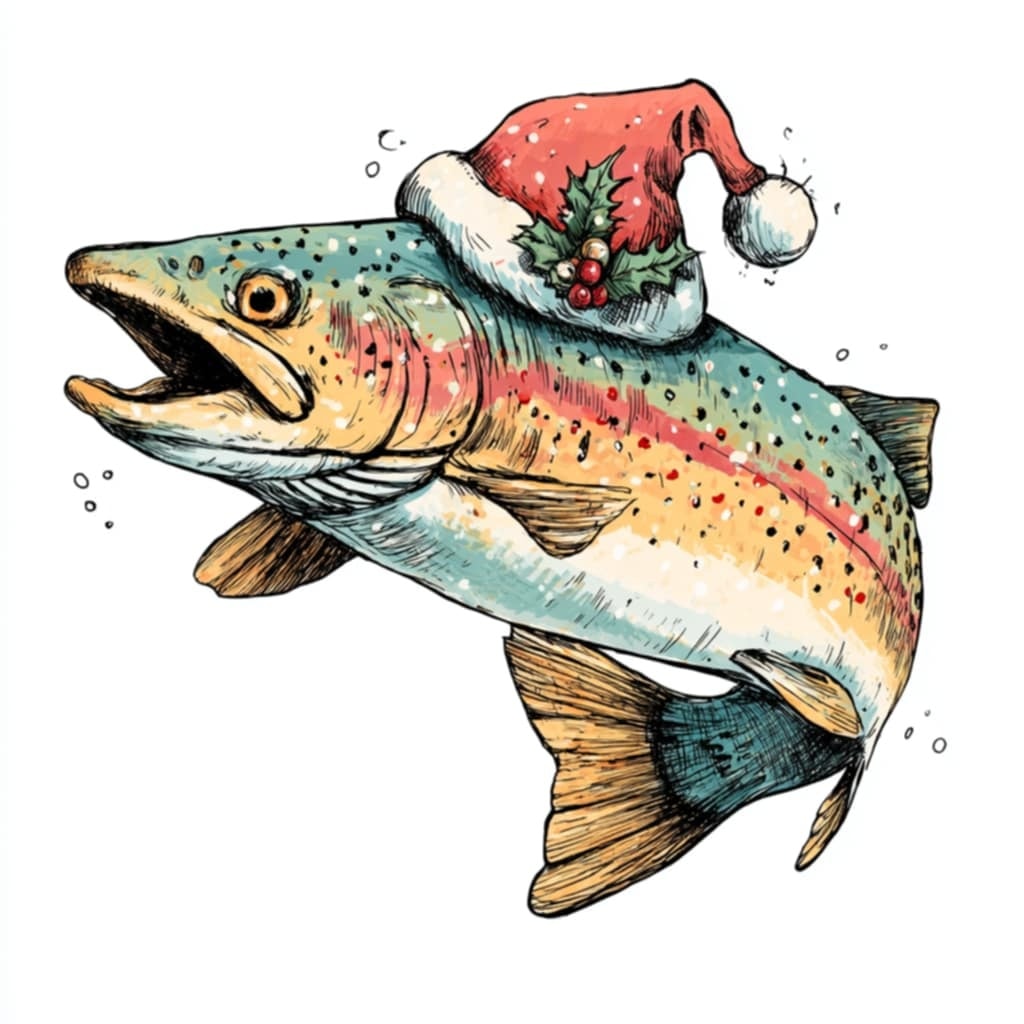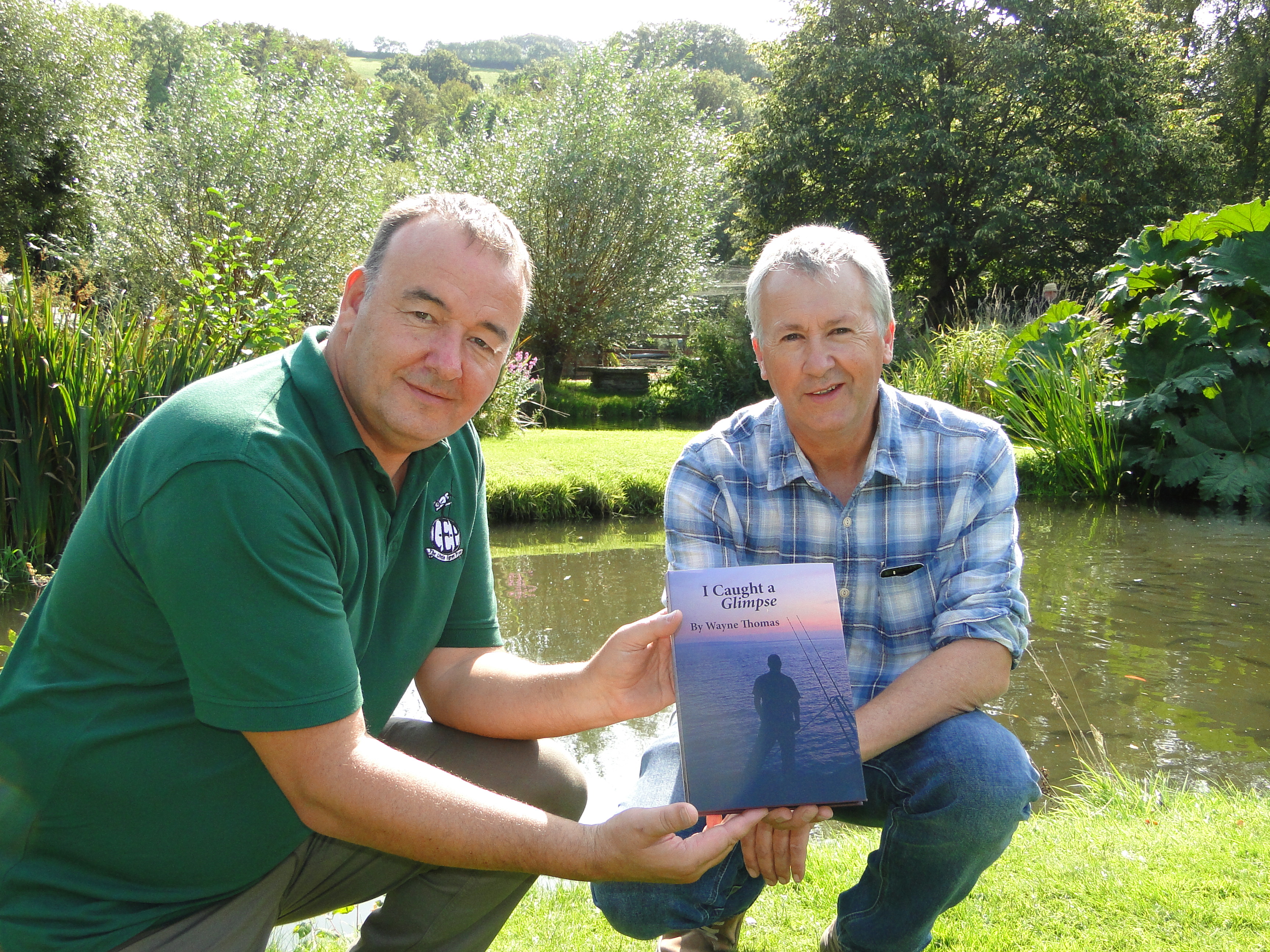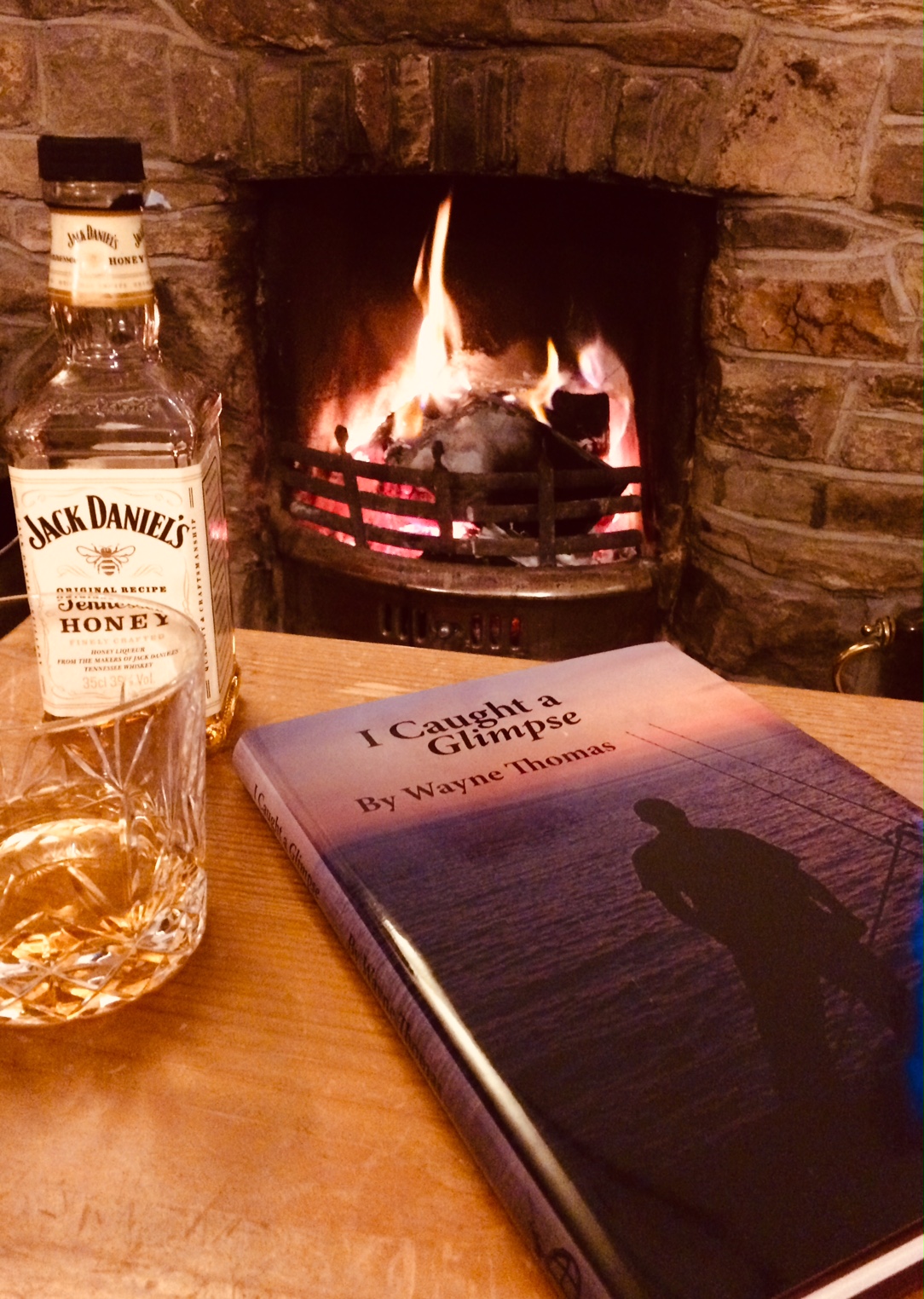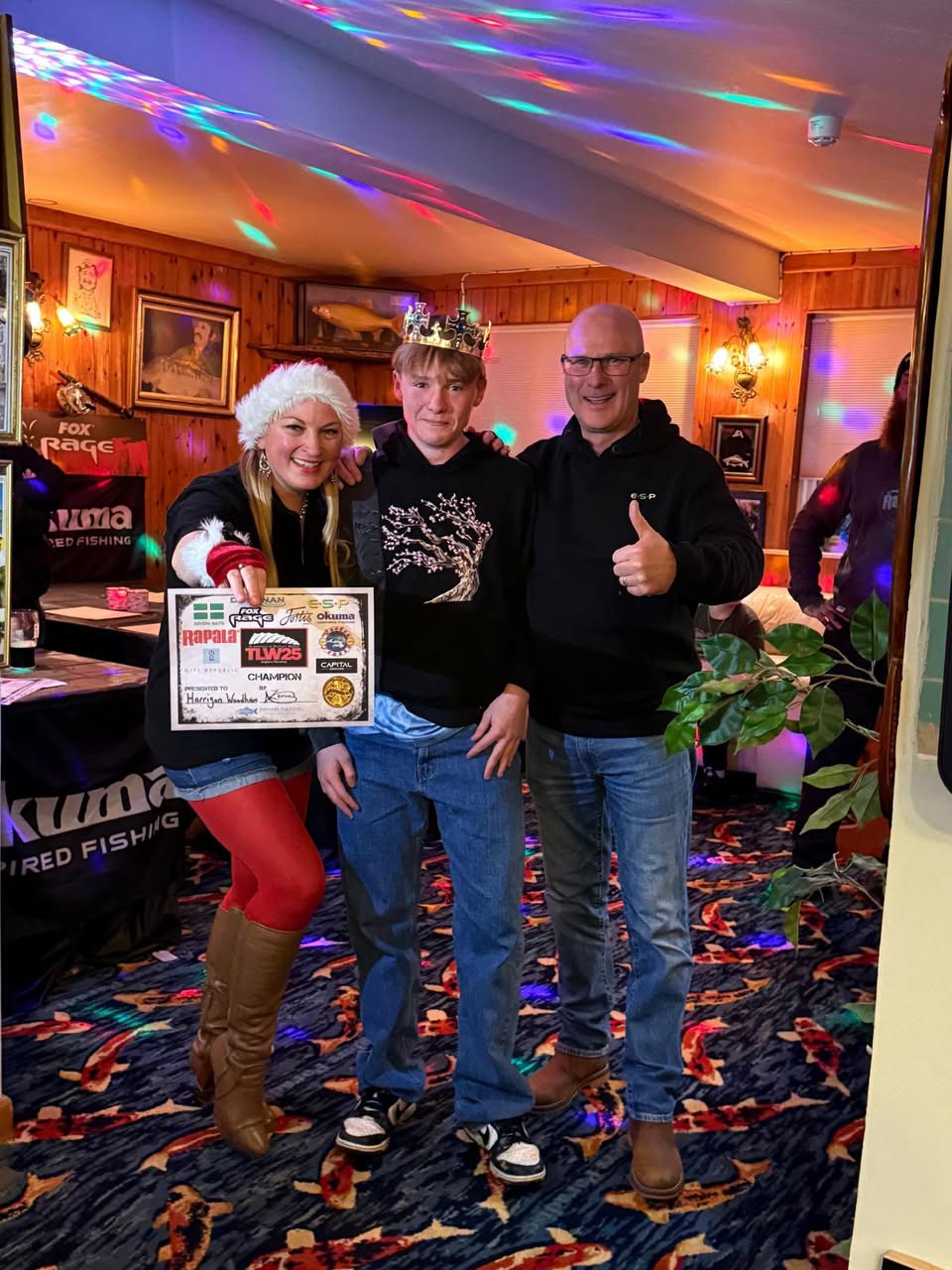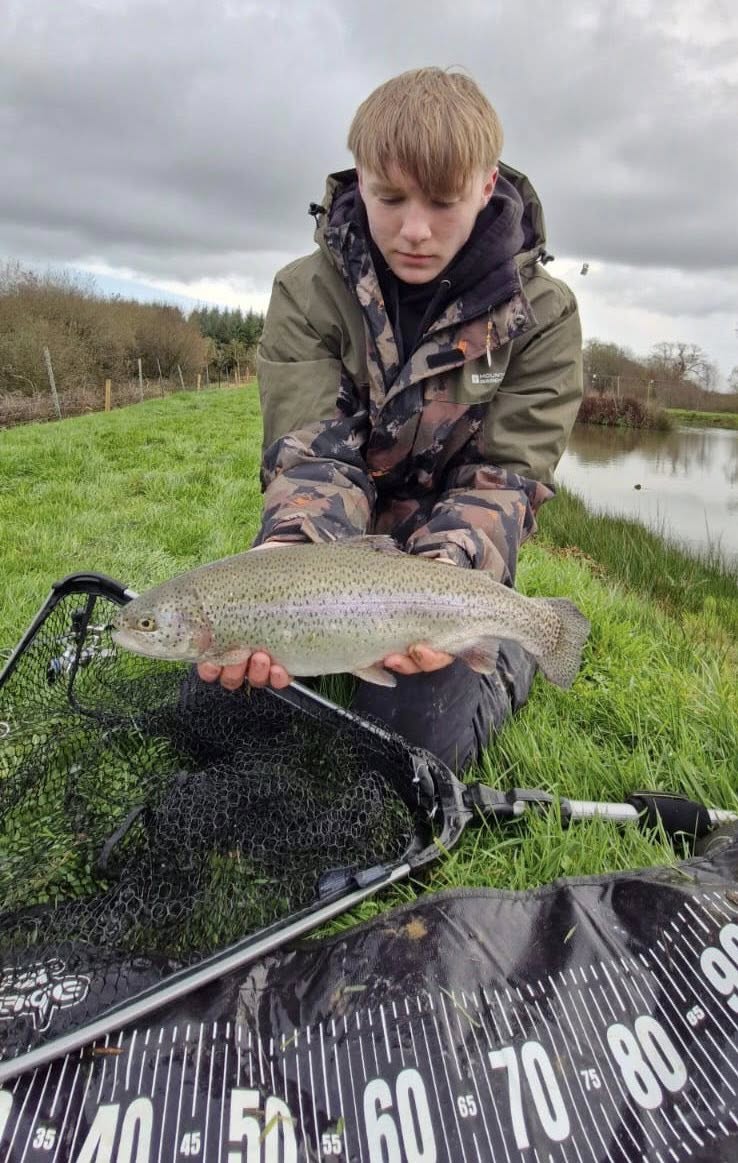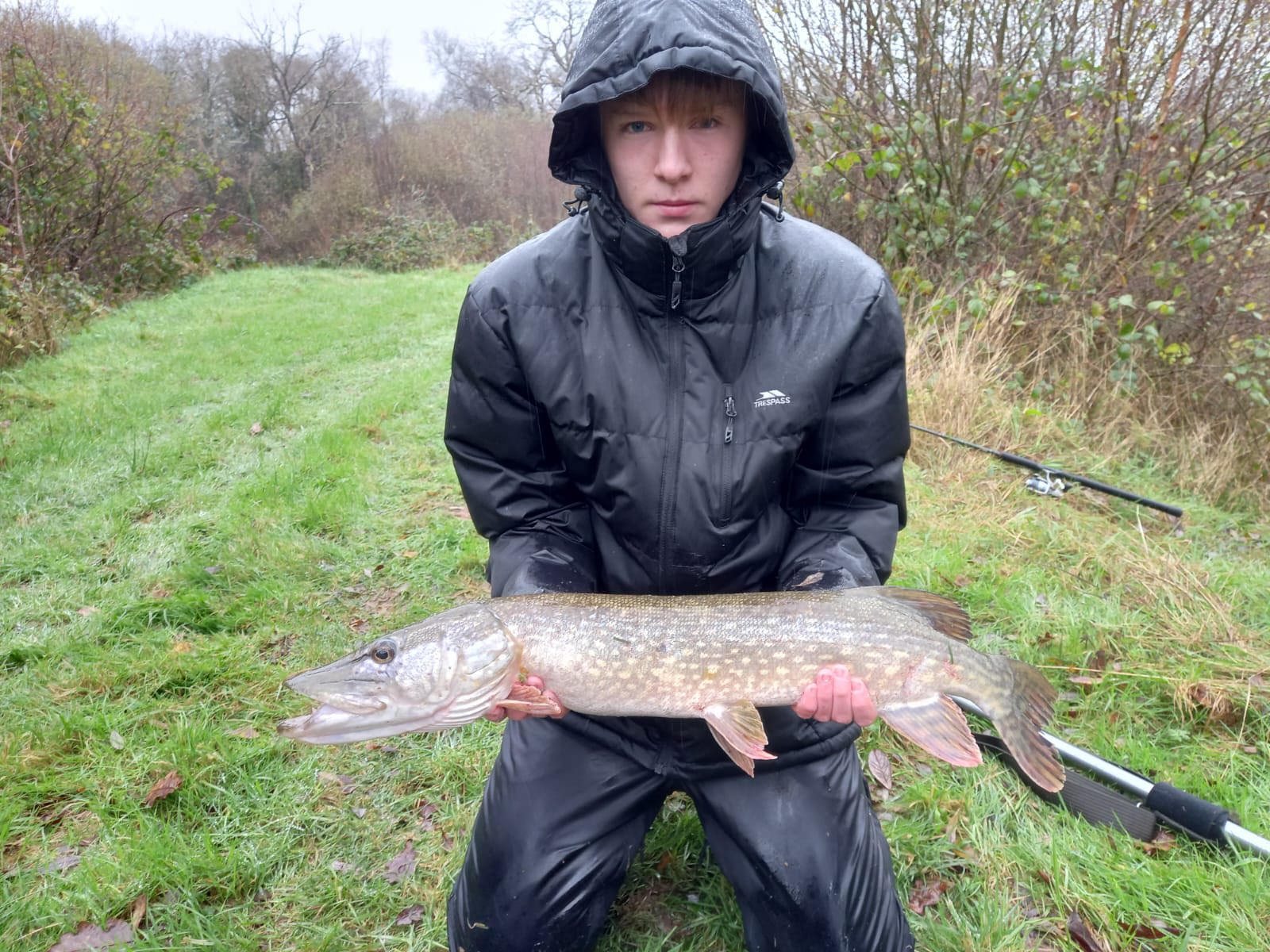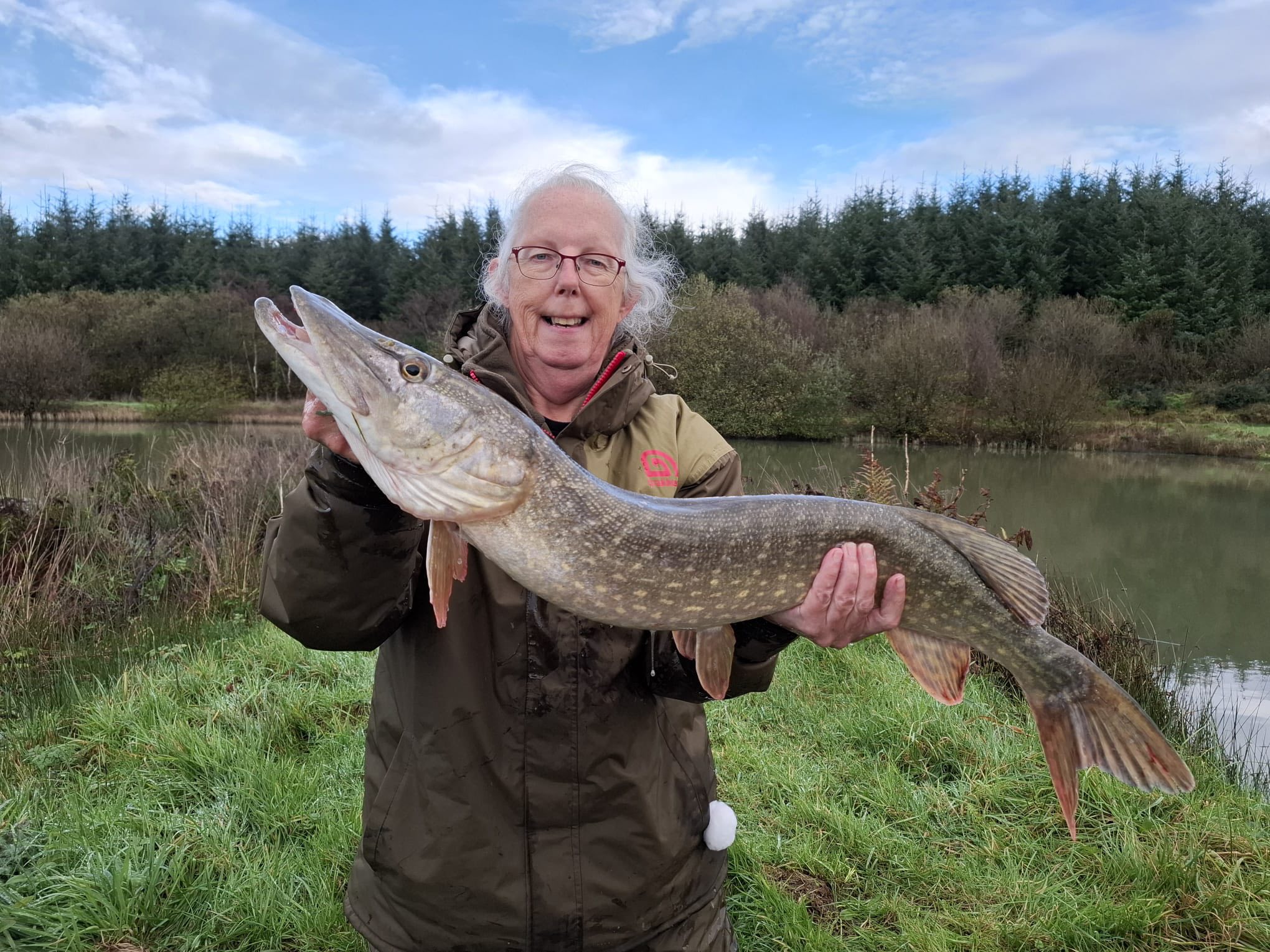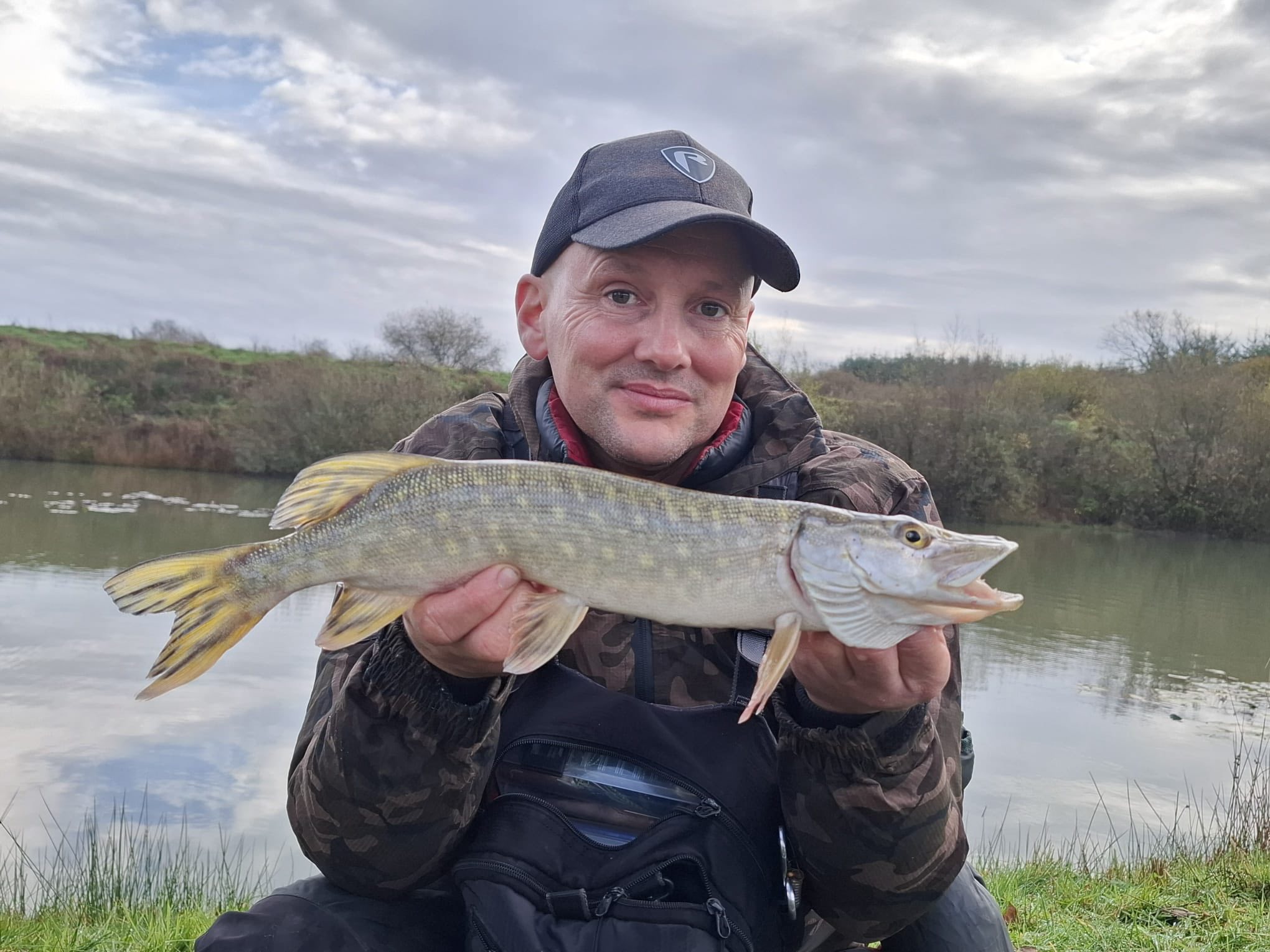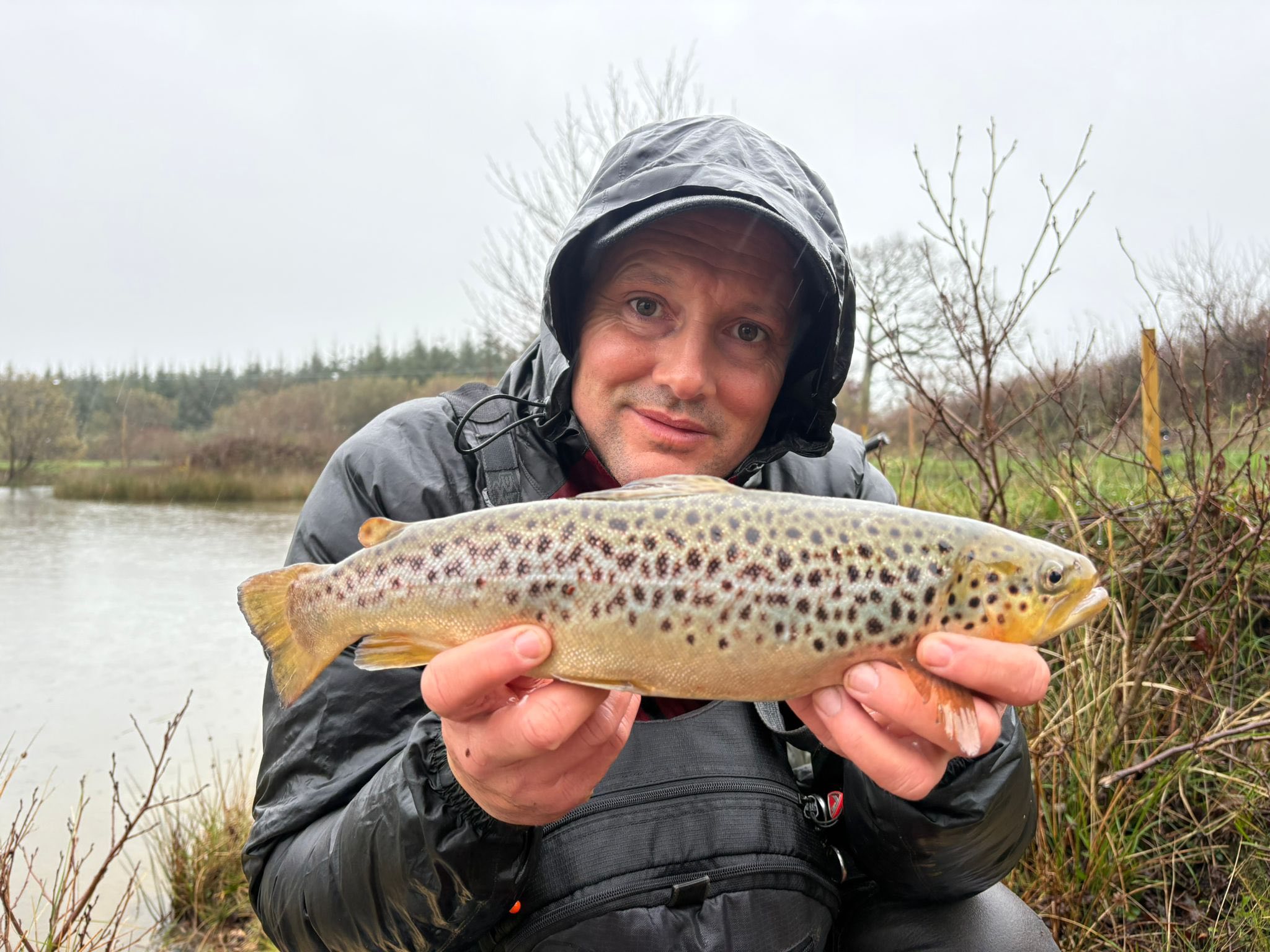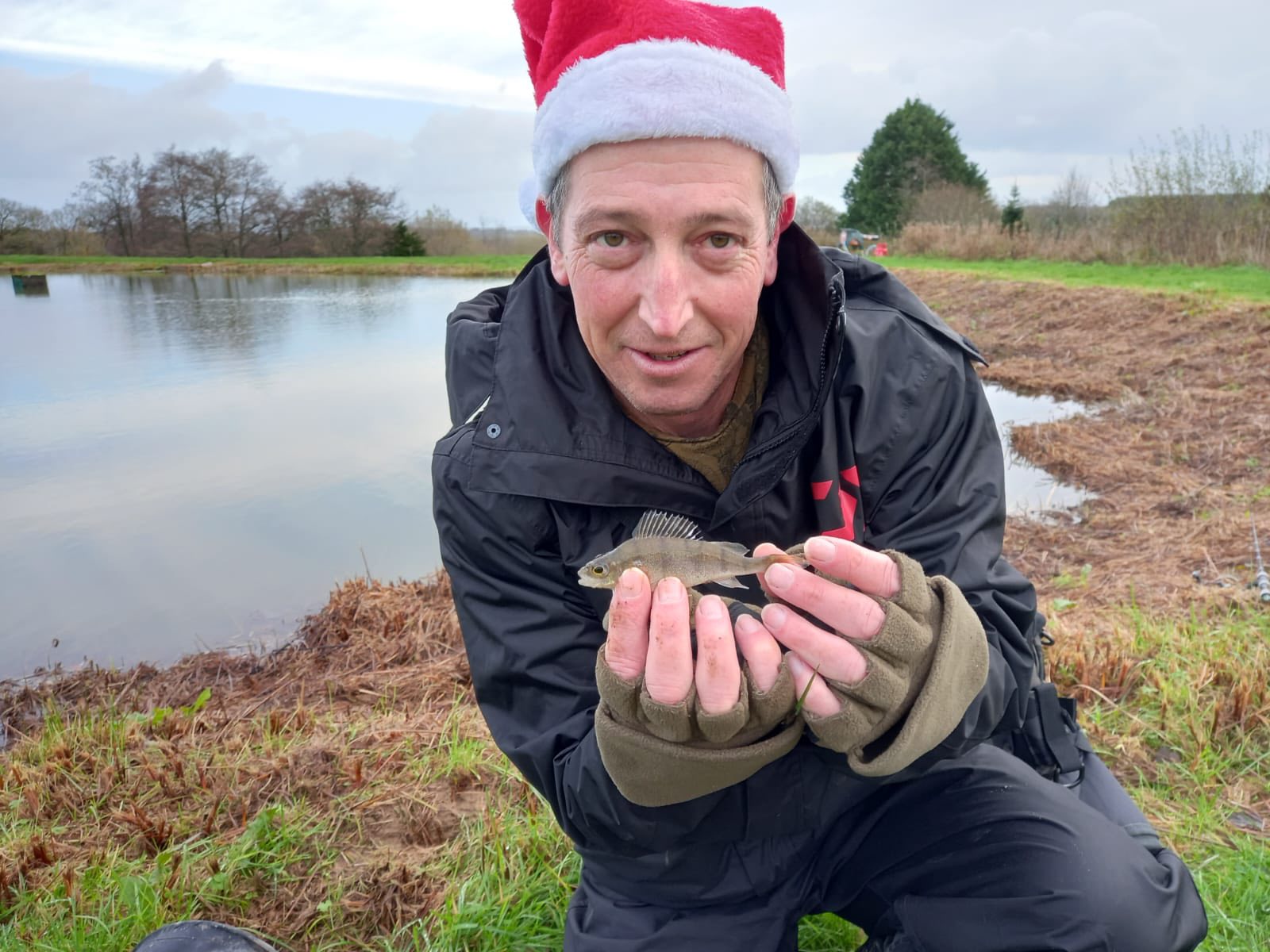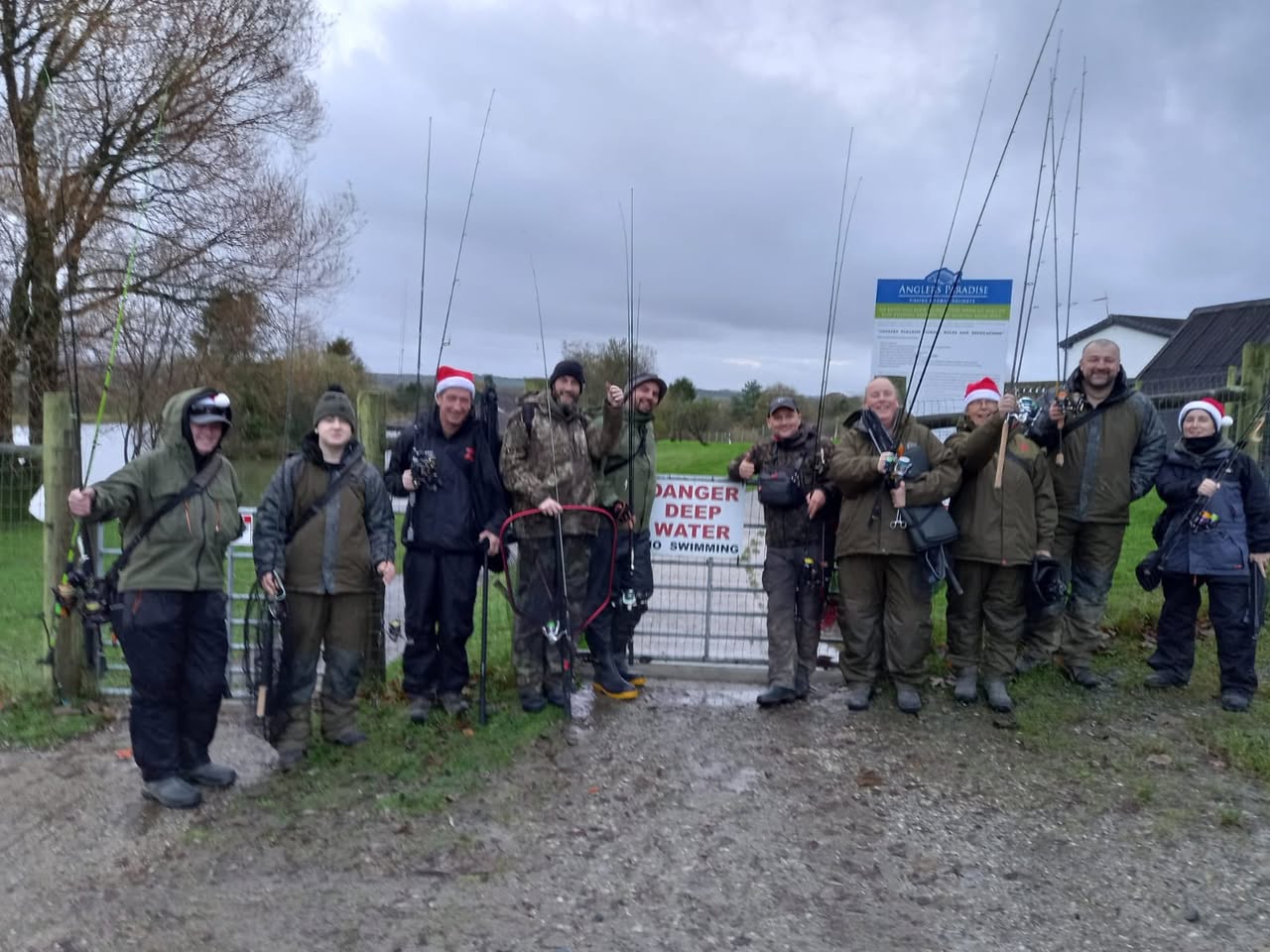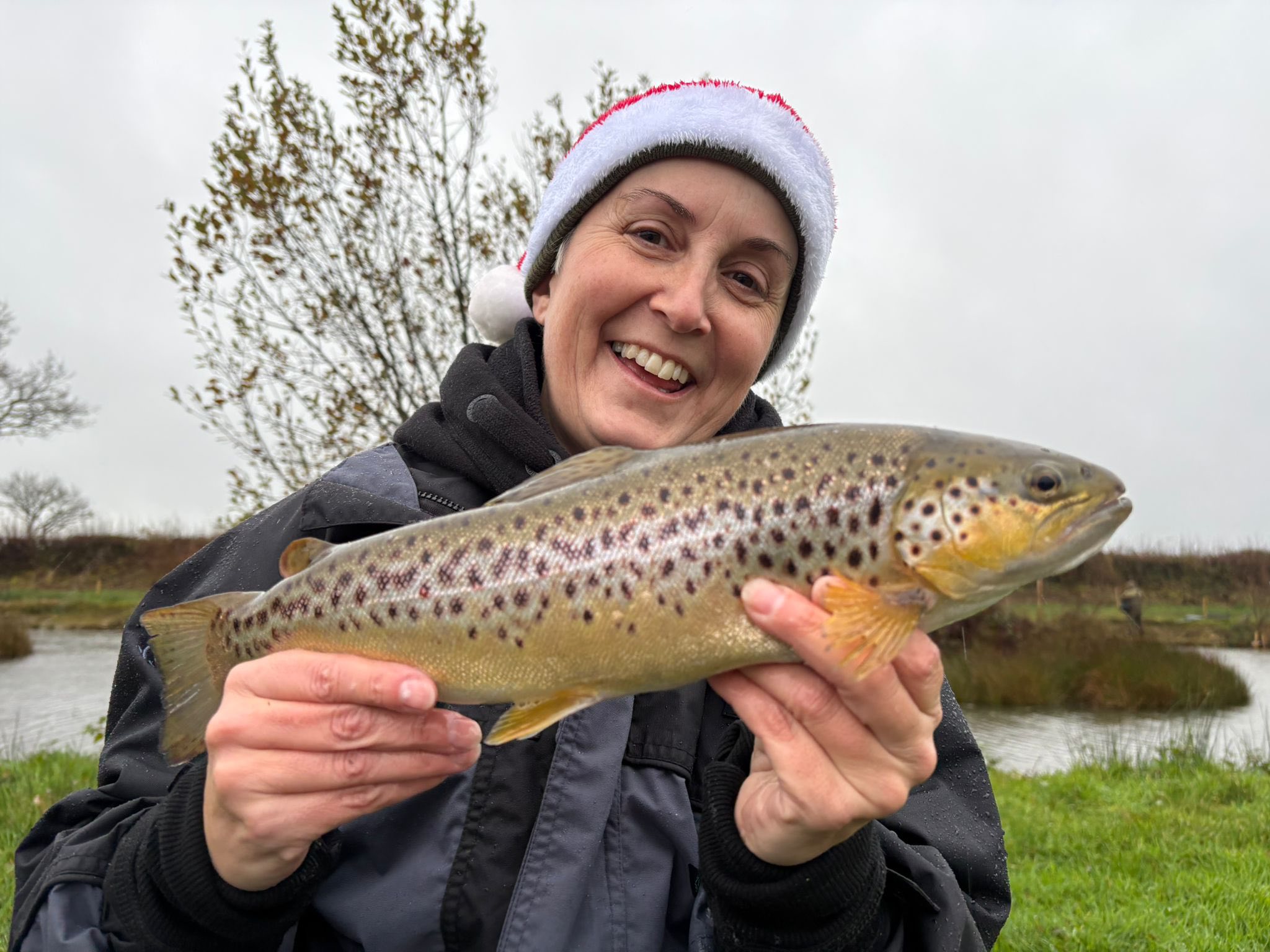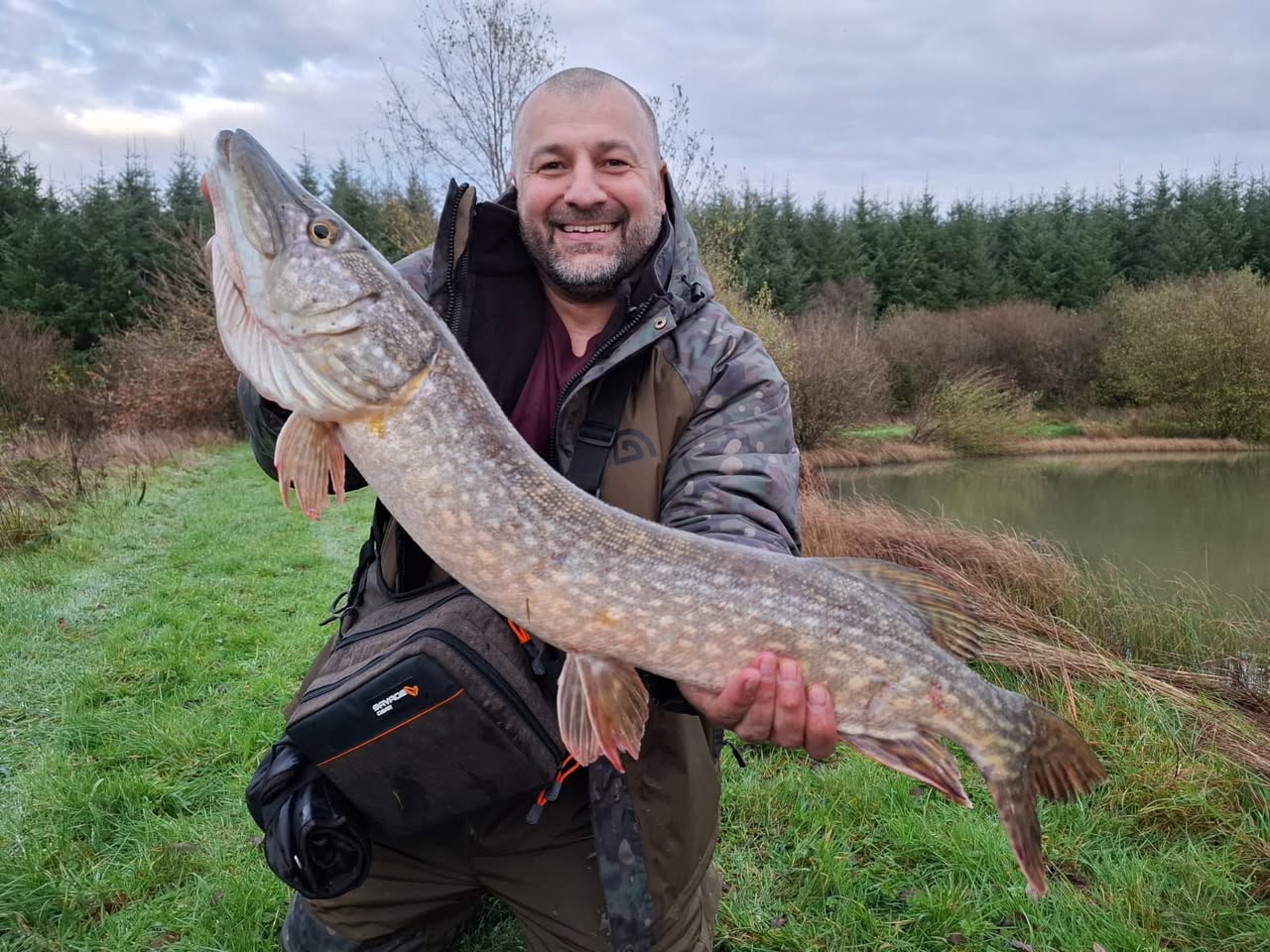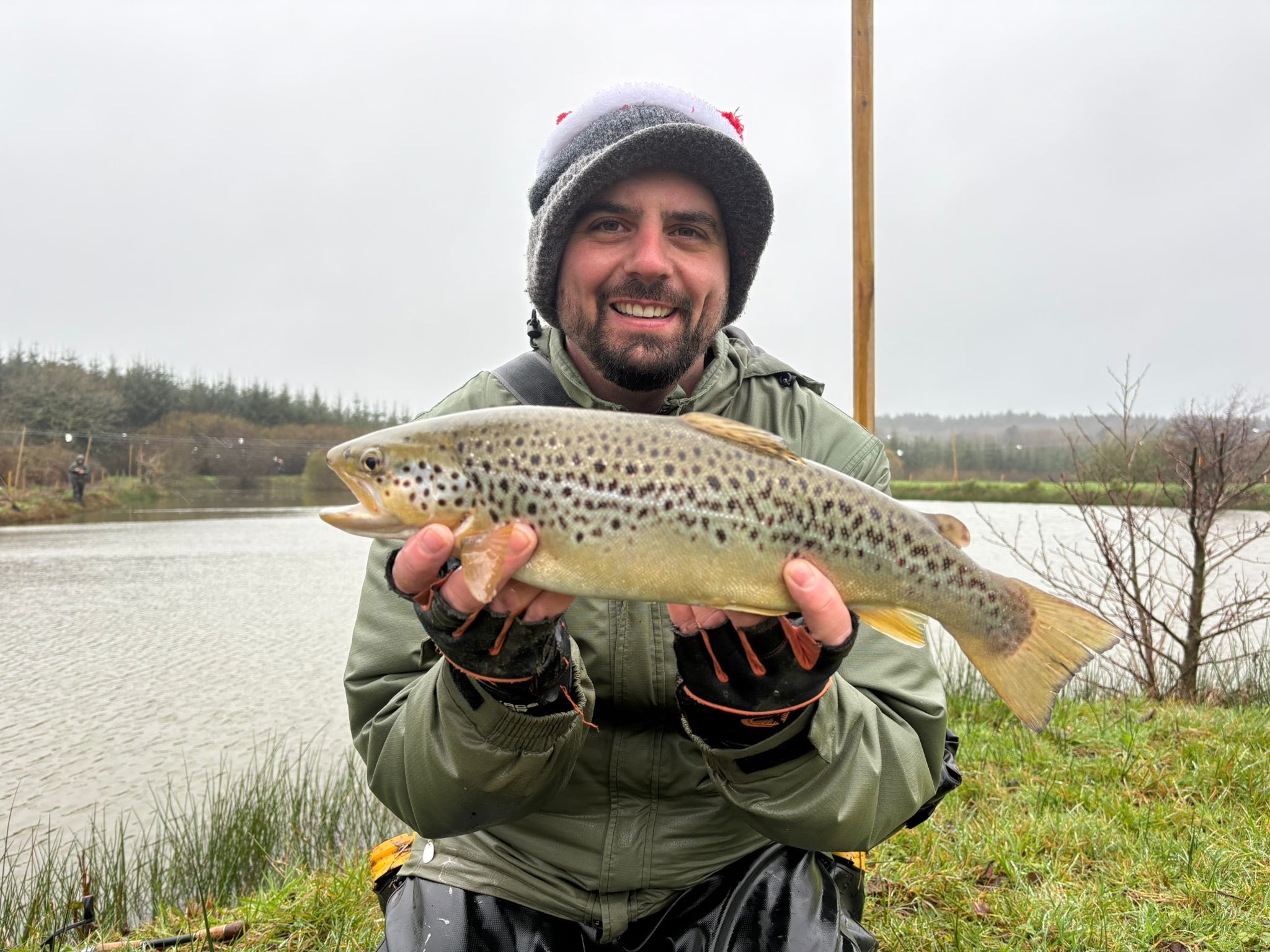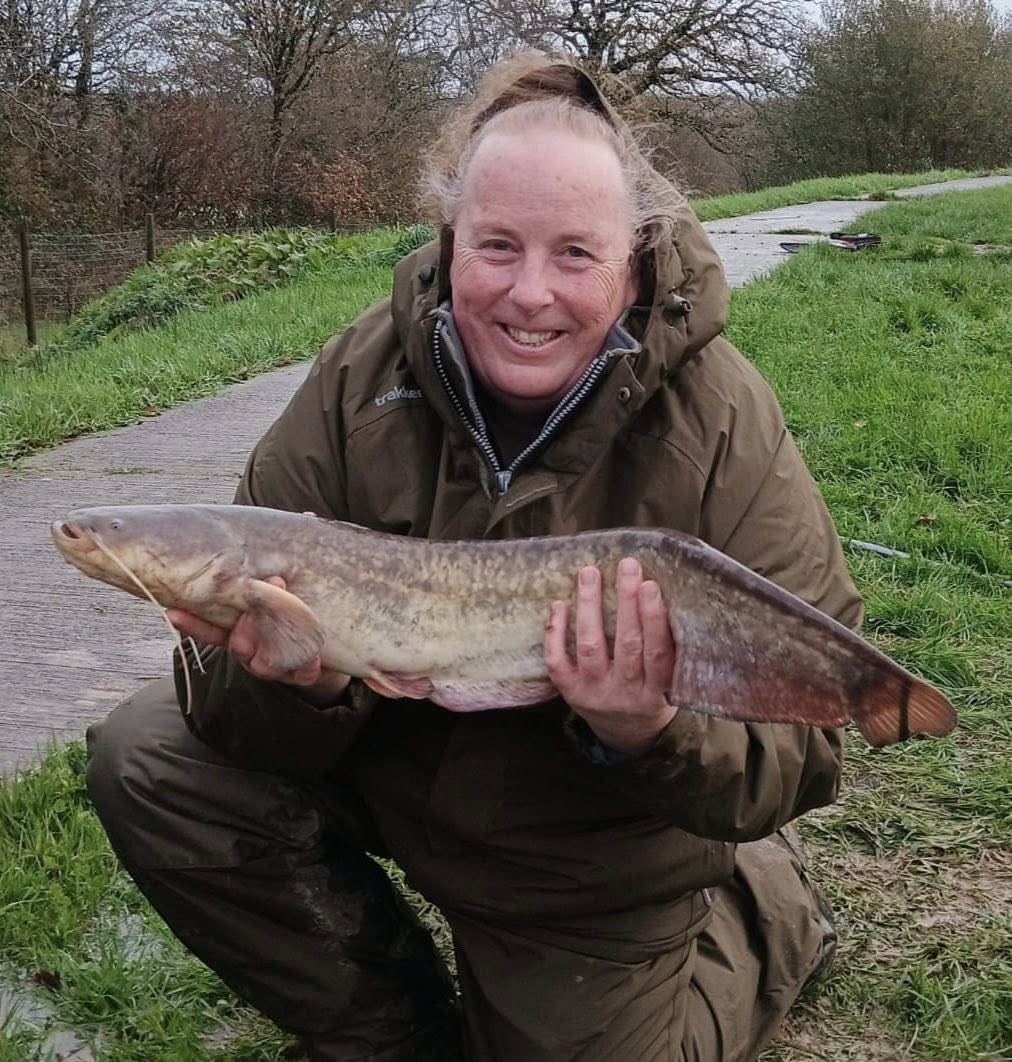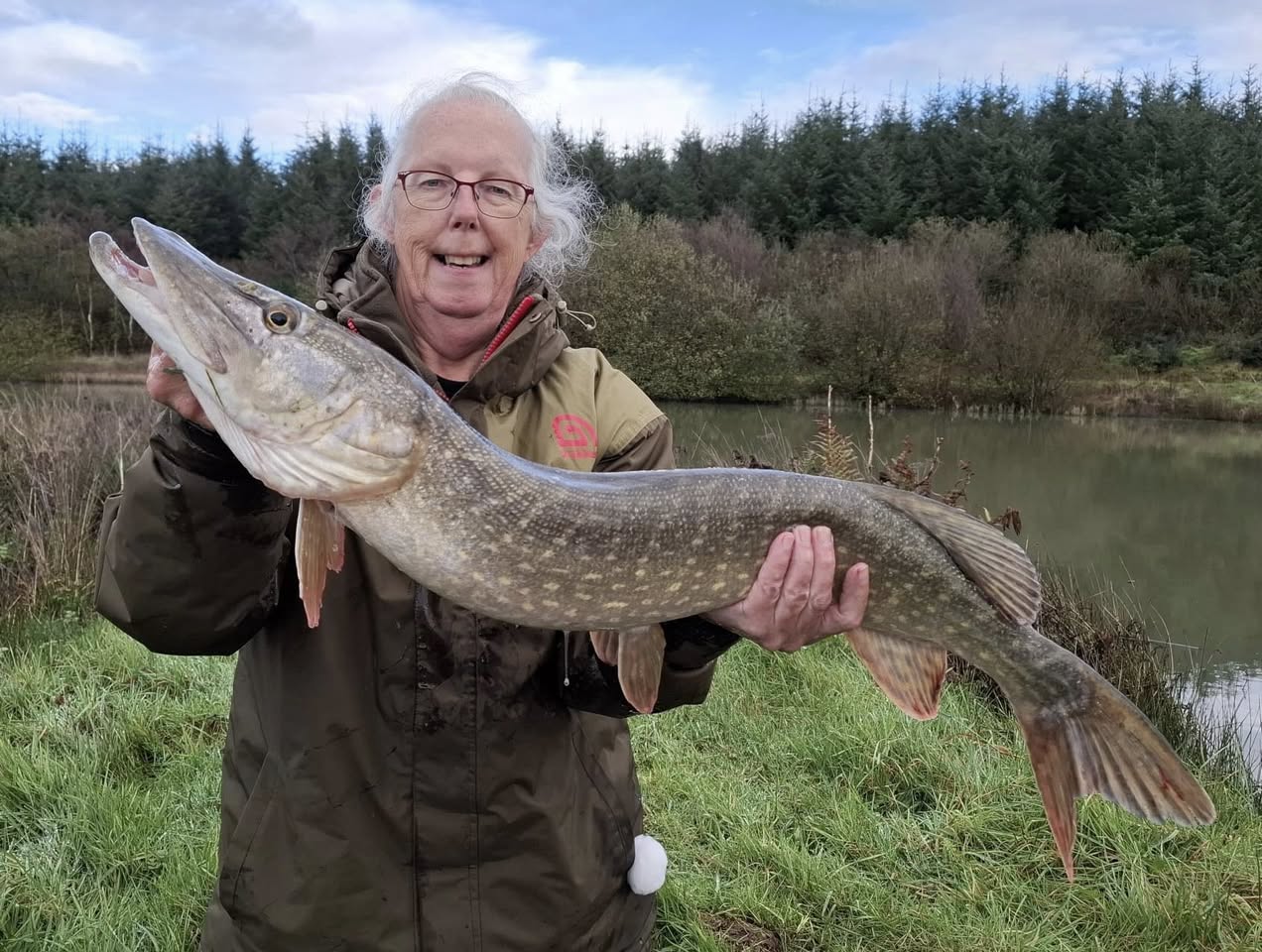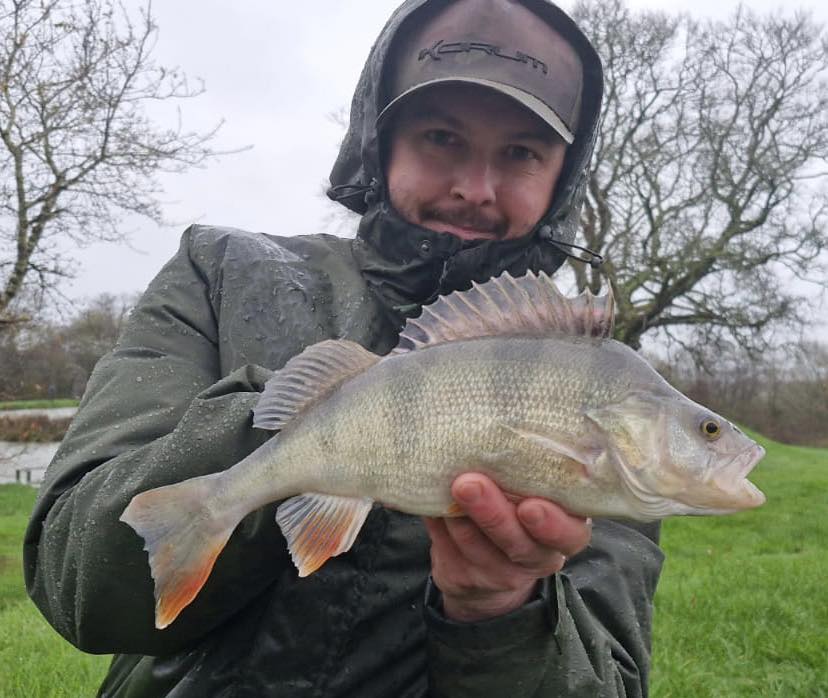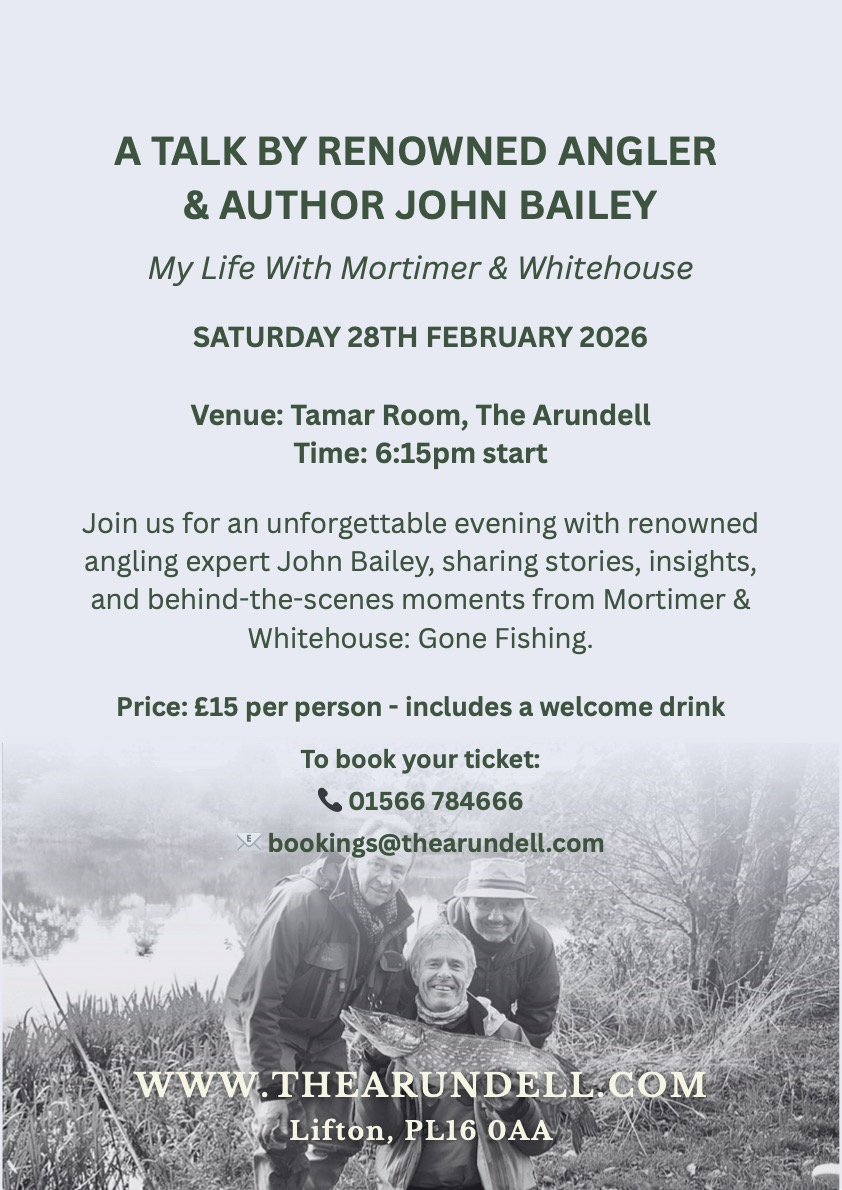
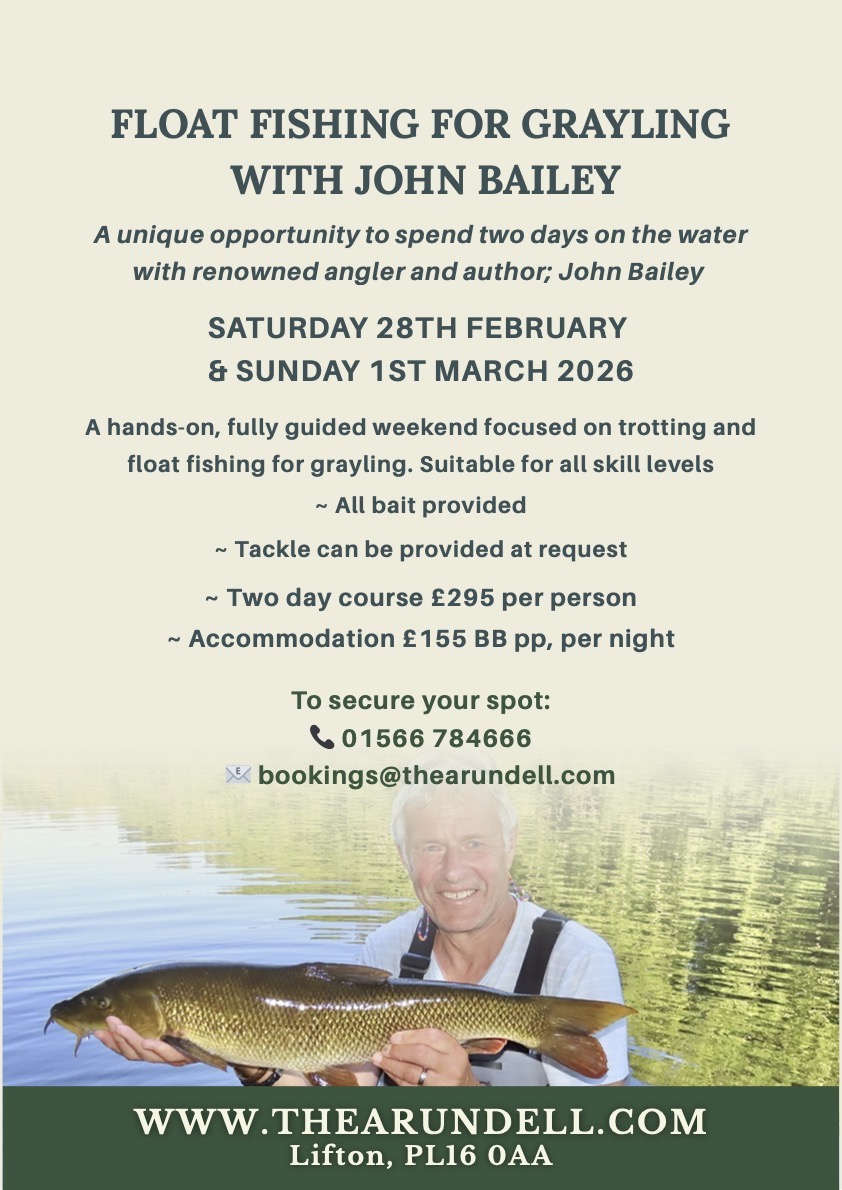

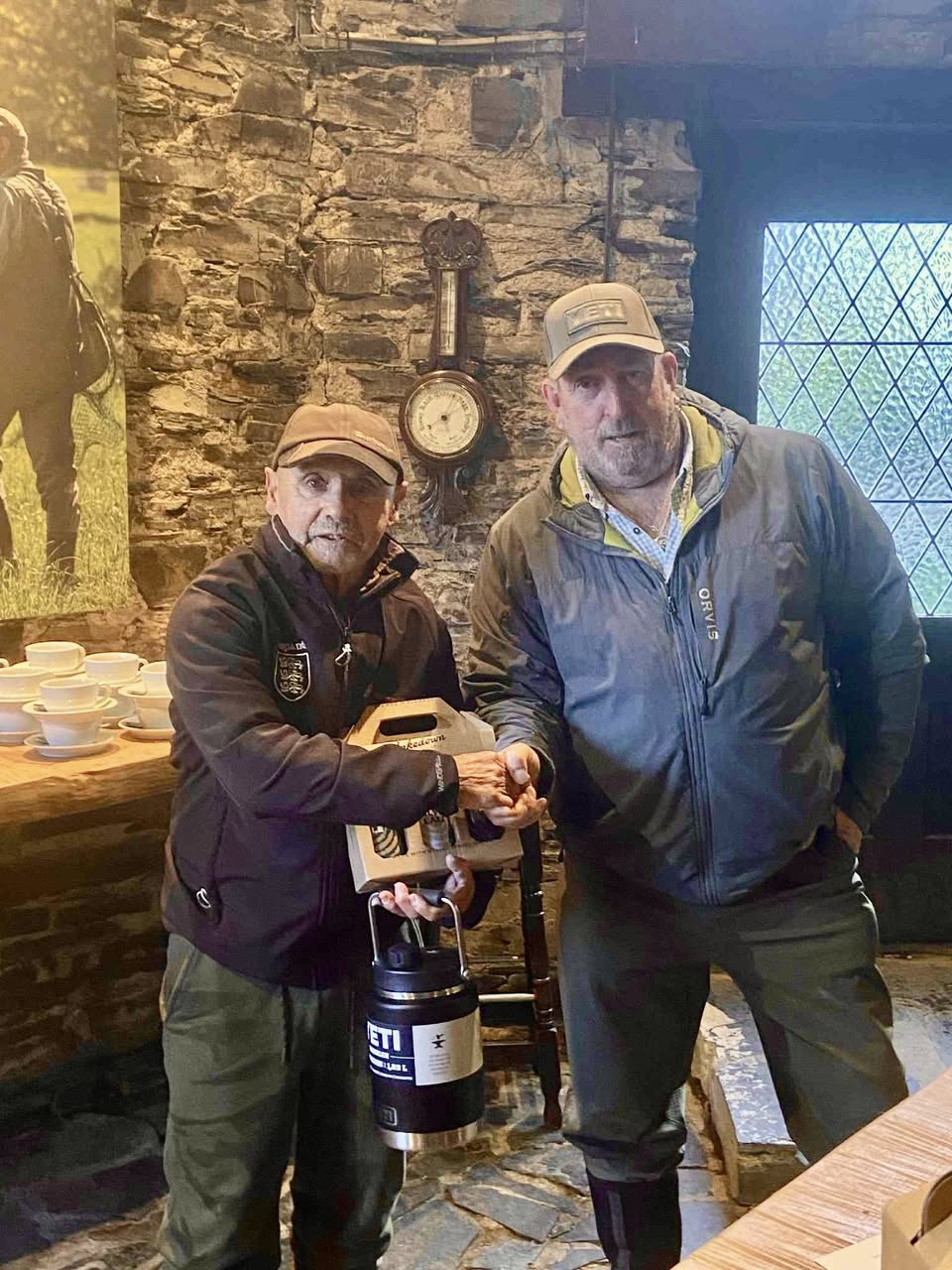

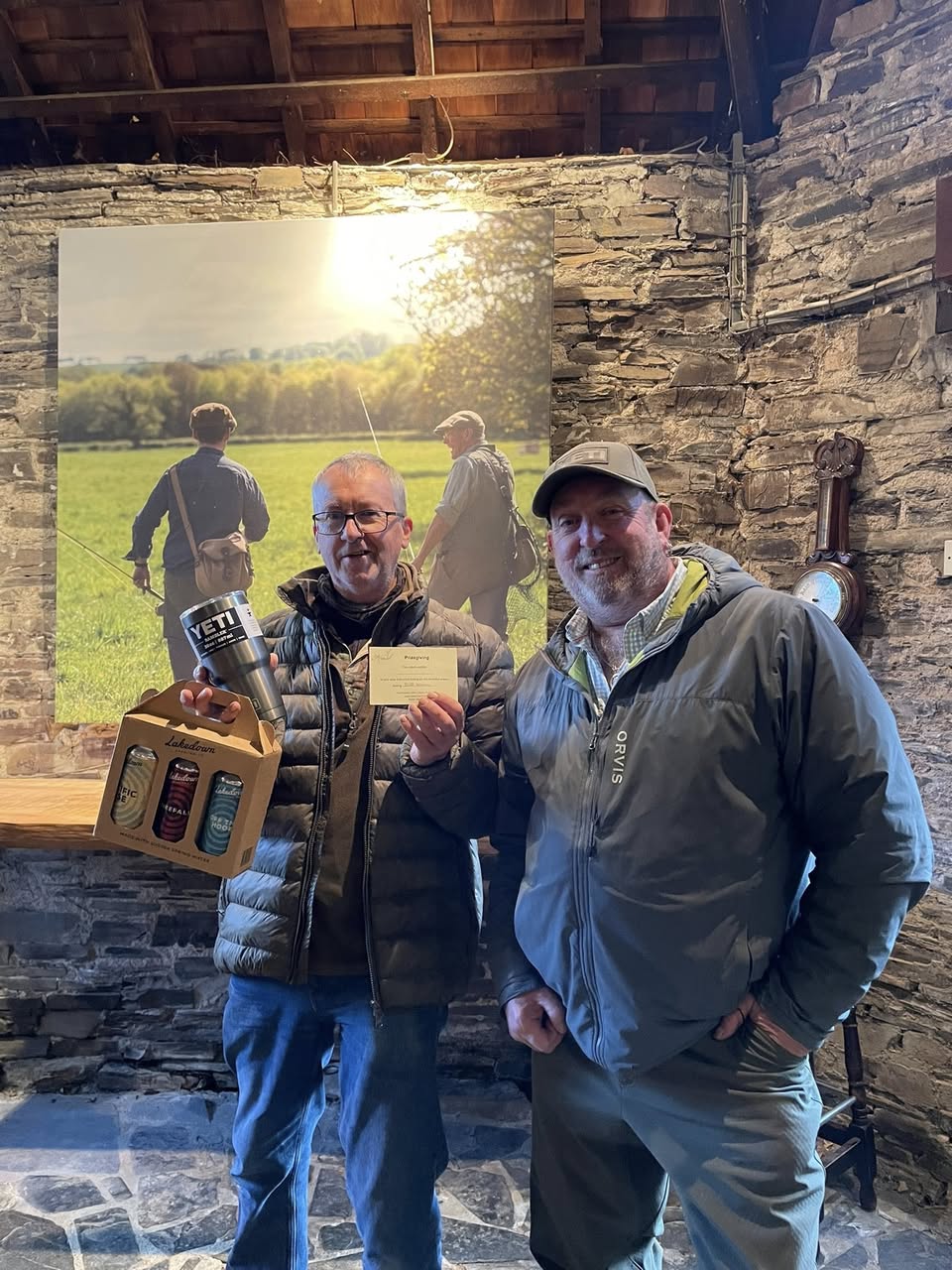

A personal account of the day
The winding Devon roads took me over hills and through misty valleys as the sun slowly broke through illuminating the frosty landscape. It was a classic winter morning, sounds of the sixties on the radio and a day’s fishing to look forward to.
I arrived at my destination the Arundell shortly after 8:00am and joined Rodney Wevill and other Fluff Chucker’s in the car park as the days shooting party scurried around in readiness for their day ahead.
After a brief catch up we headed into the historic Cockpit building for bacon baps and freshly brewed coffee. Anticipation for the day ahead was high and fuelled by tales of previous trips and adventures.
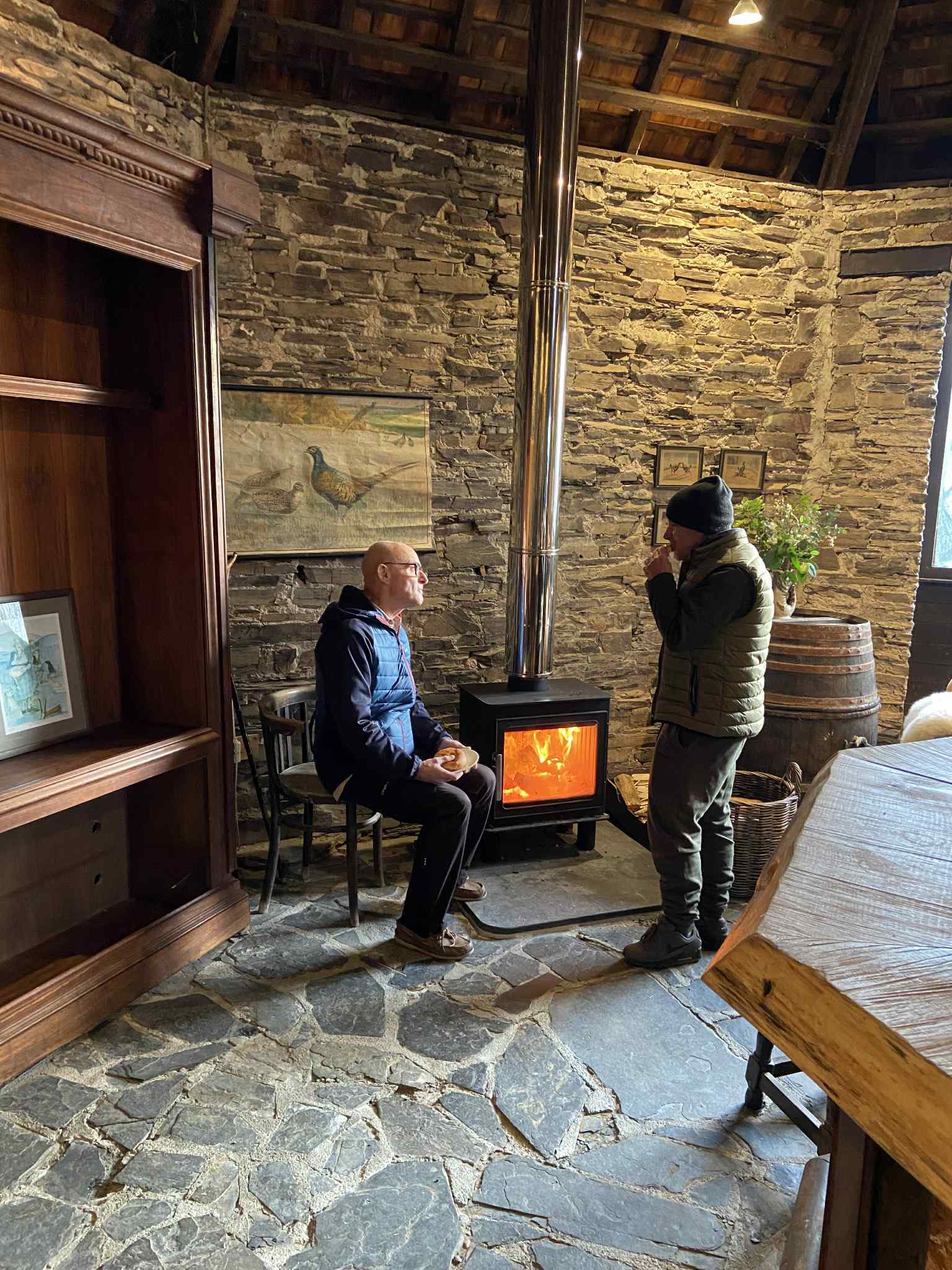
In addition to several miles of river fishing for salmon, sea trout, brown trout and grayling the Arundell has its own lake. The lake is an old flooded quarry with crystal clear water that is regularly stocked with brown and rainbow trout. Despite the average stock size being between 1lb 8oz and 2lb far larger trout are known to lurk within the deep dark waters.
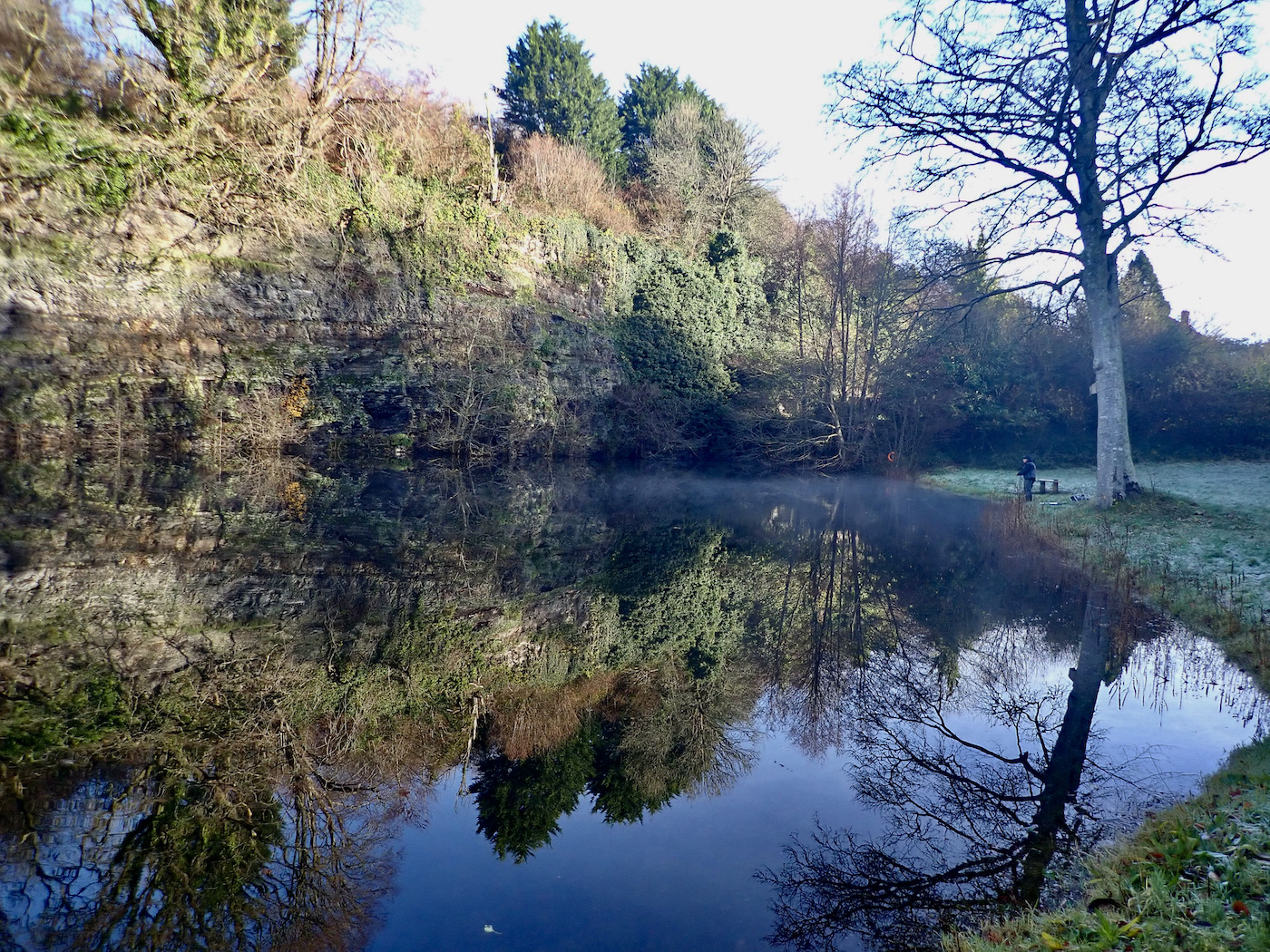
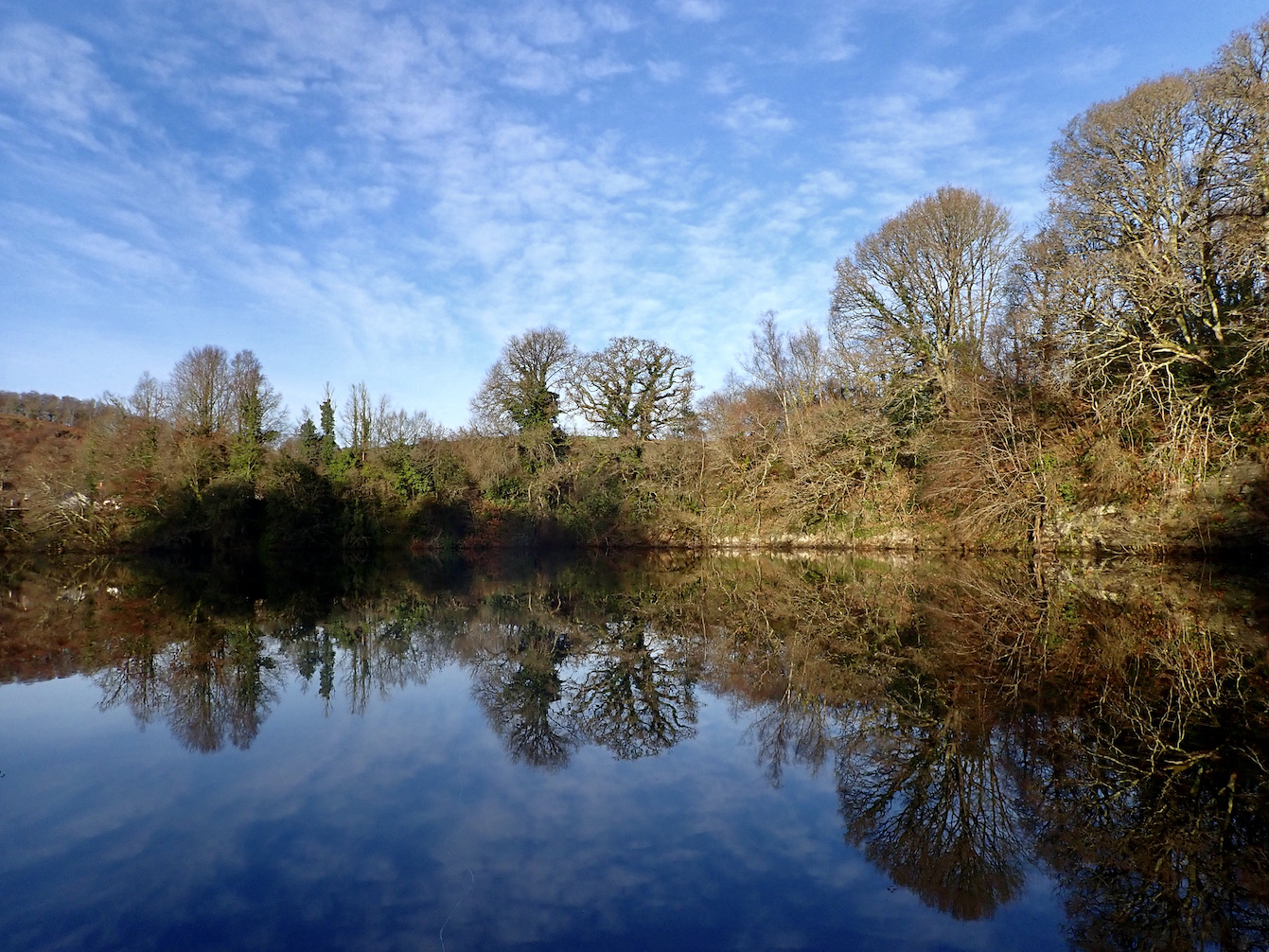
James Christoforou is head of fishing at the Arundell so before heading to the lake to compete with fellow Fluff Chucker’s I sought James advice as to tactics and flies. Following his advice I set up two rods one with a duo set up as James thought it likely that the fish would be near to the surface. The other rod was set up with a rather drab gold-head lure on the point with a flexible tail dressing that would flutter attractively in the water.

The competition started at 10:00am with each angler on their drawn peg. Every half an hour each angler would move two pegs ensuring that by the end of the day each peg had been fished.
I had drawn peg one with Roger Truscott to my right on peg two. Shortly after cast off I glanced over to see Rogers rod bent as a trout splashed about on a tight line. Within a few moments of releasing this trout Roger was in again and I wondered just how he has such a knack of connecting with the trout!
I cast my line and watched the leader intently lifting the rod briskly when it twitched slightly as the lure sank in the clear water. It was good to connect and get a fish under my belt. As we moved pegs I asked Roger how many he had caught and he replied “eight or nine I think”. By this time I had managed a brace of rainbows and browns.
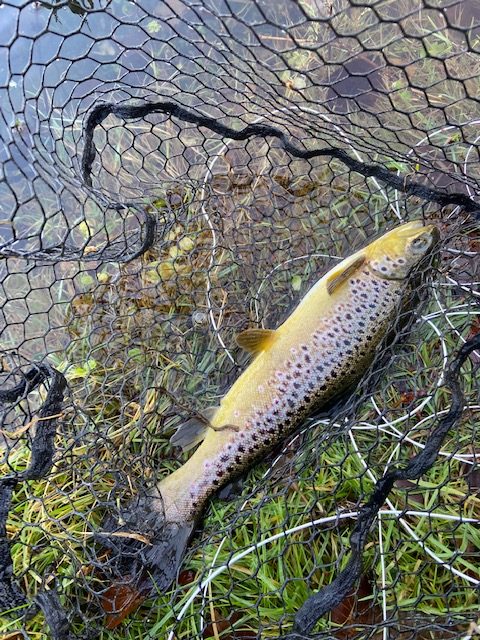

As expected the catch rate started to drop for all and by the end of the morning I think Roger was on nine whilst I was on seven.
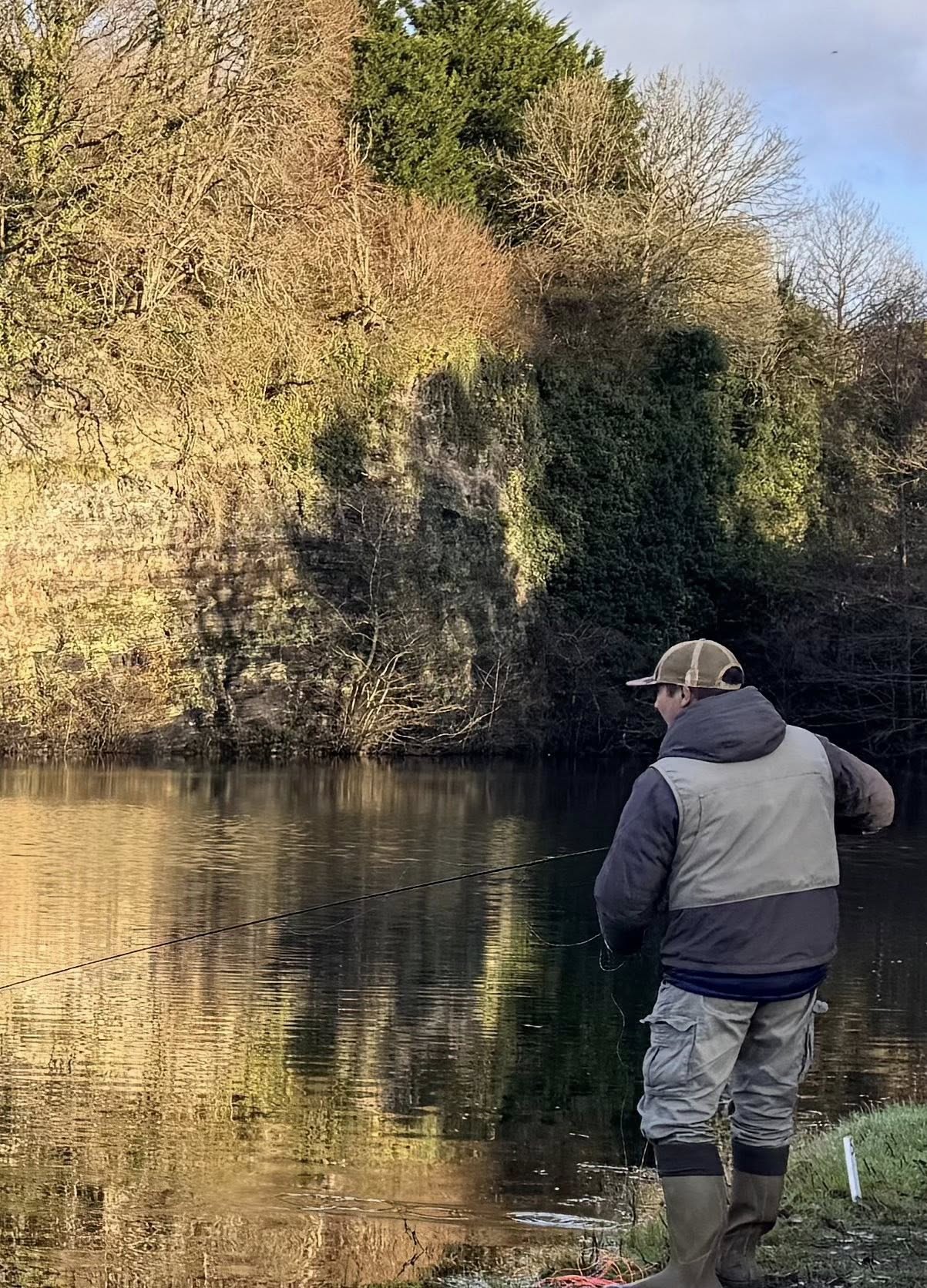
We stopped for lunch at midday and James delivered hot pasties and coffee to those who requested it. For half an hour we all chatted and analysed the mornings fishing. It was obvious that Roger and I had received a big slice of good fortune as pegs one to four were undoubtedly well populated with recently stocked fish. The two end pegs at the lakes far end producing no trout.

The afternoon was surprisingly slow and I only added one fish a 43cm brown trout that was the biggest of the day. Roger once again proved his dominance of Fluff Chucker events ending the day with eleven trout.

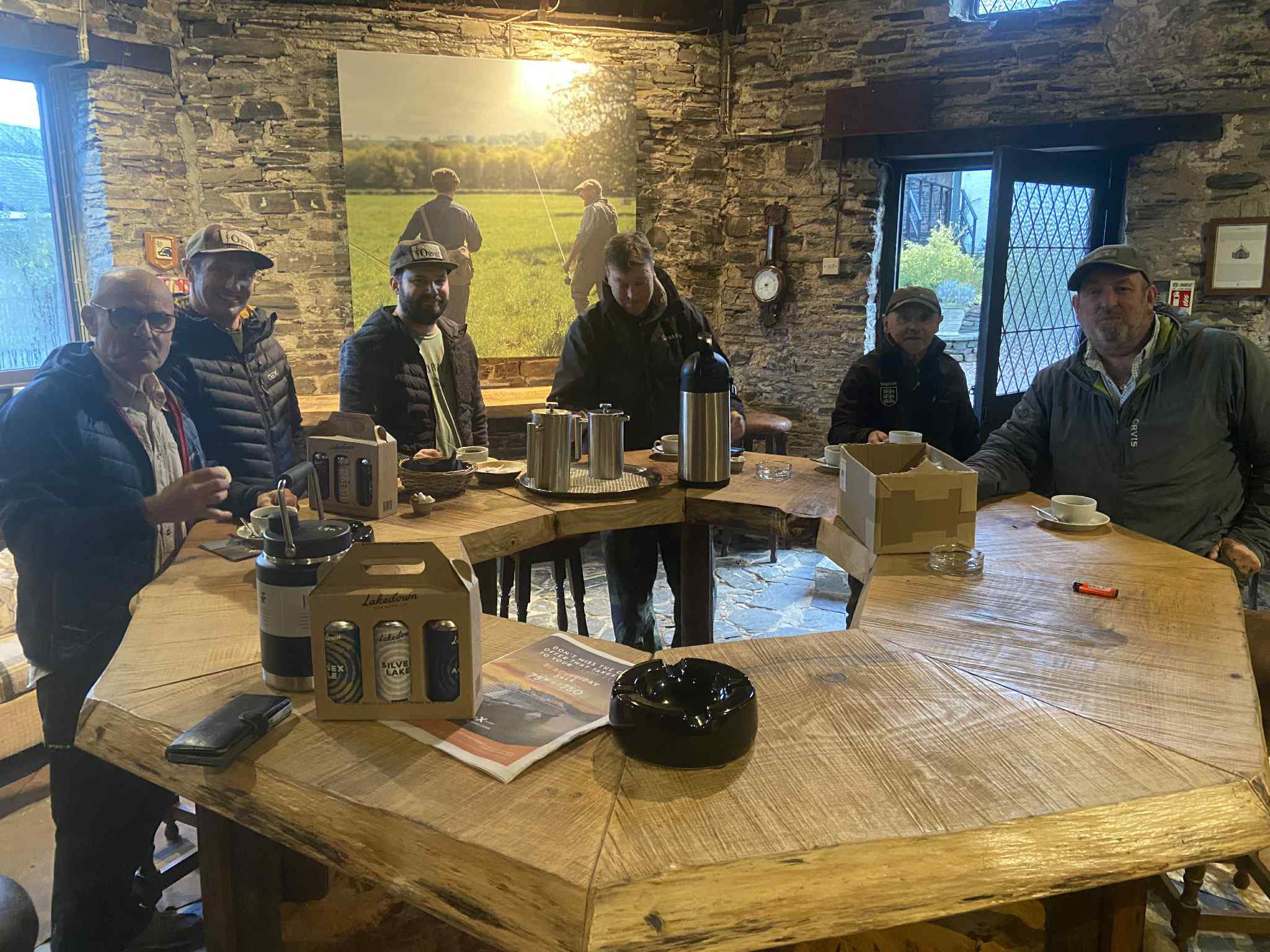
We retired once again to the warmth of the Cockpit for the prize giving and a hot coffee. Rodney Wevill does an exceptional job at organising these friendly events and securing sponsorship from Yeti, Lakedown Brewing co & Tap Room. And of course the Arundell whose waters are always a joy to fish.

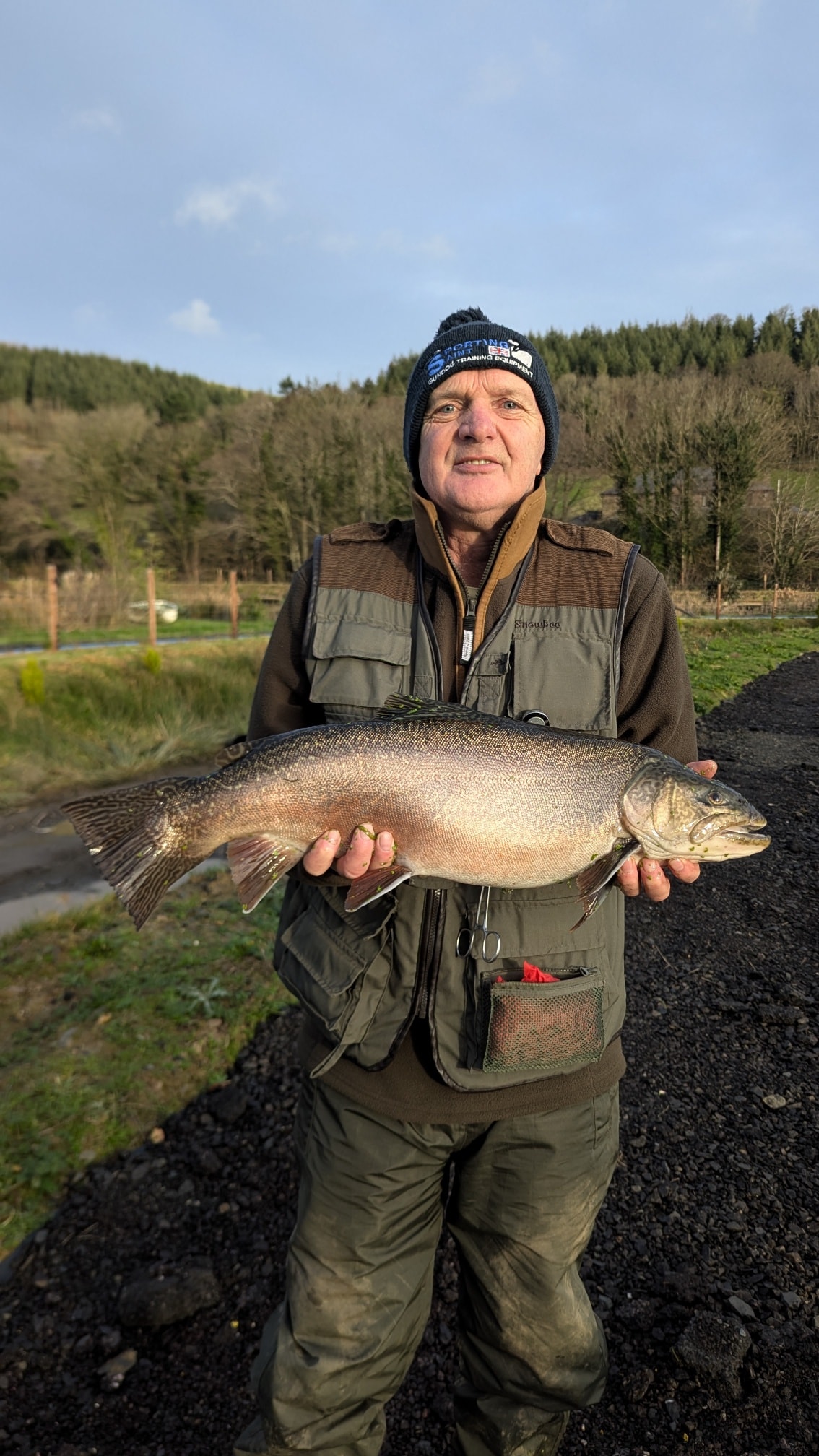









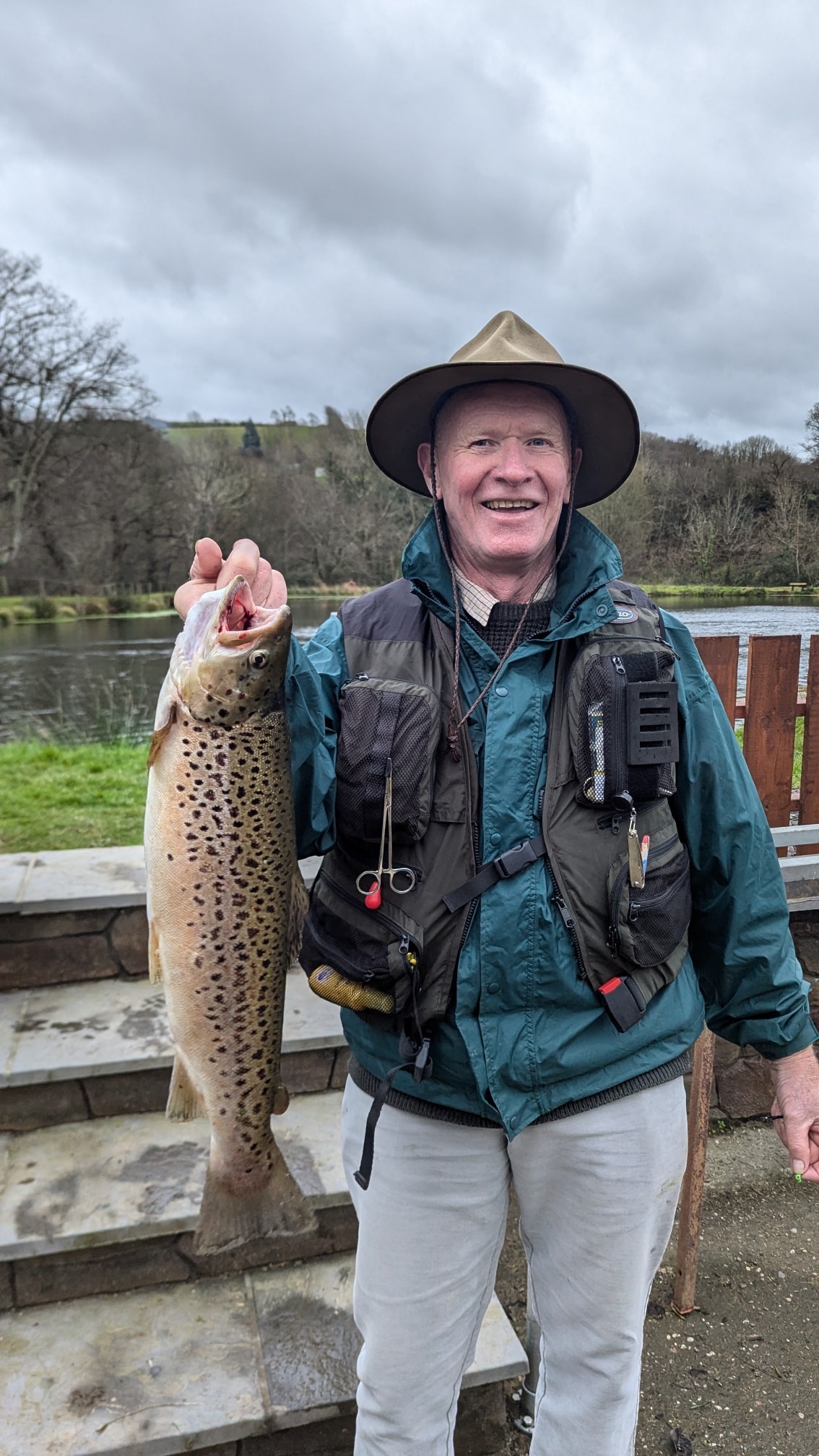


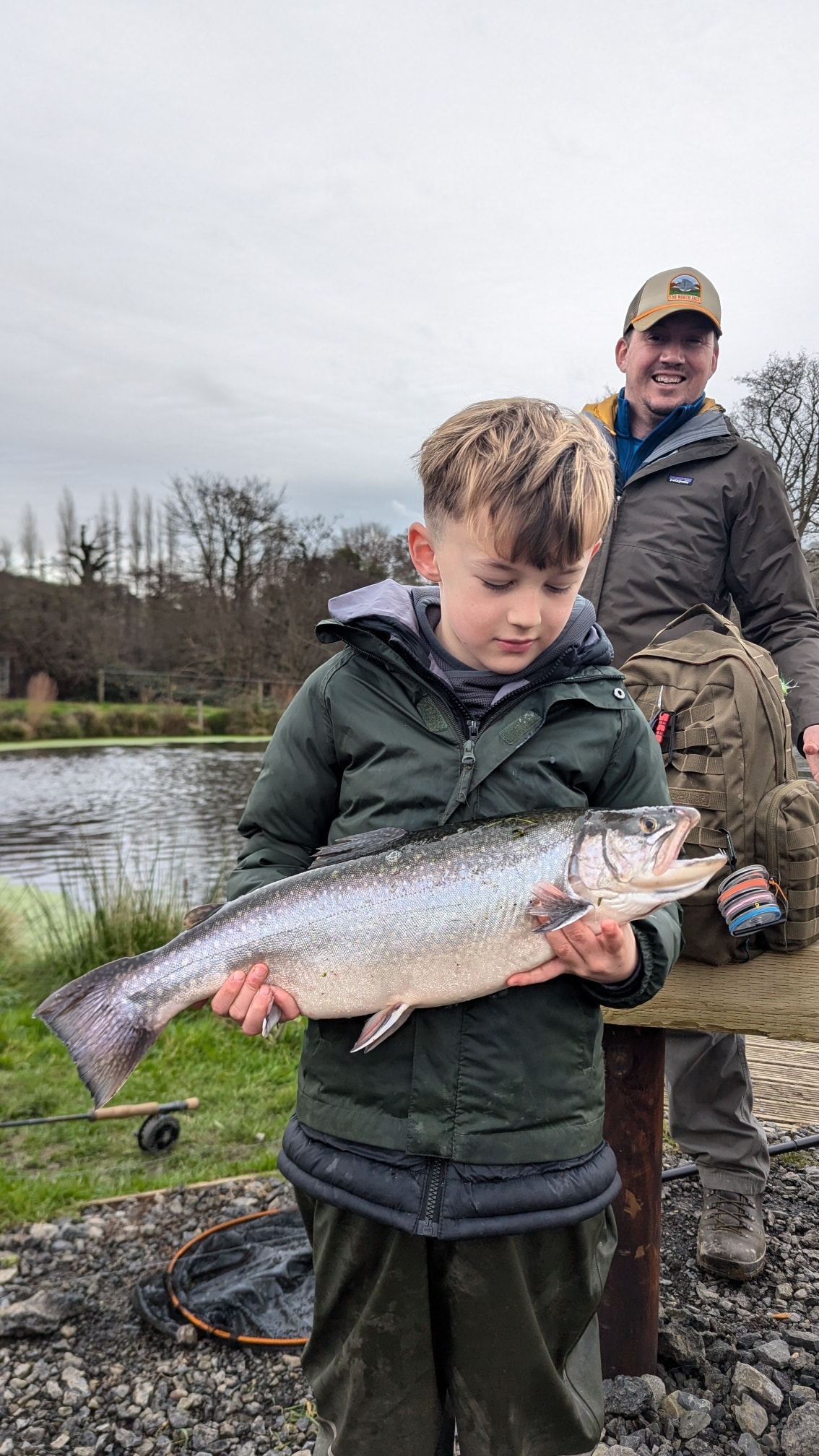

ANGLING REPORT

Sixty Pound Carp from Paradise
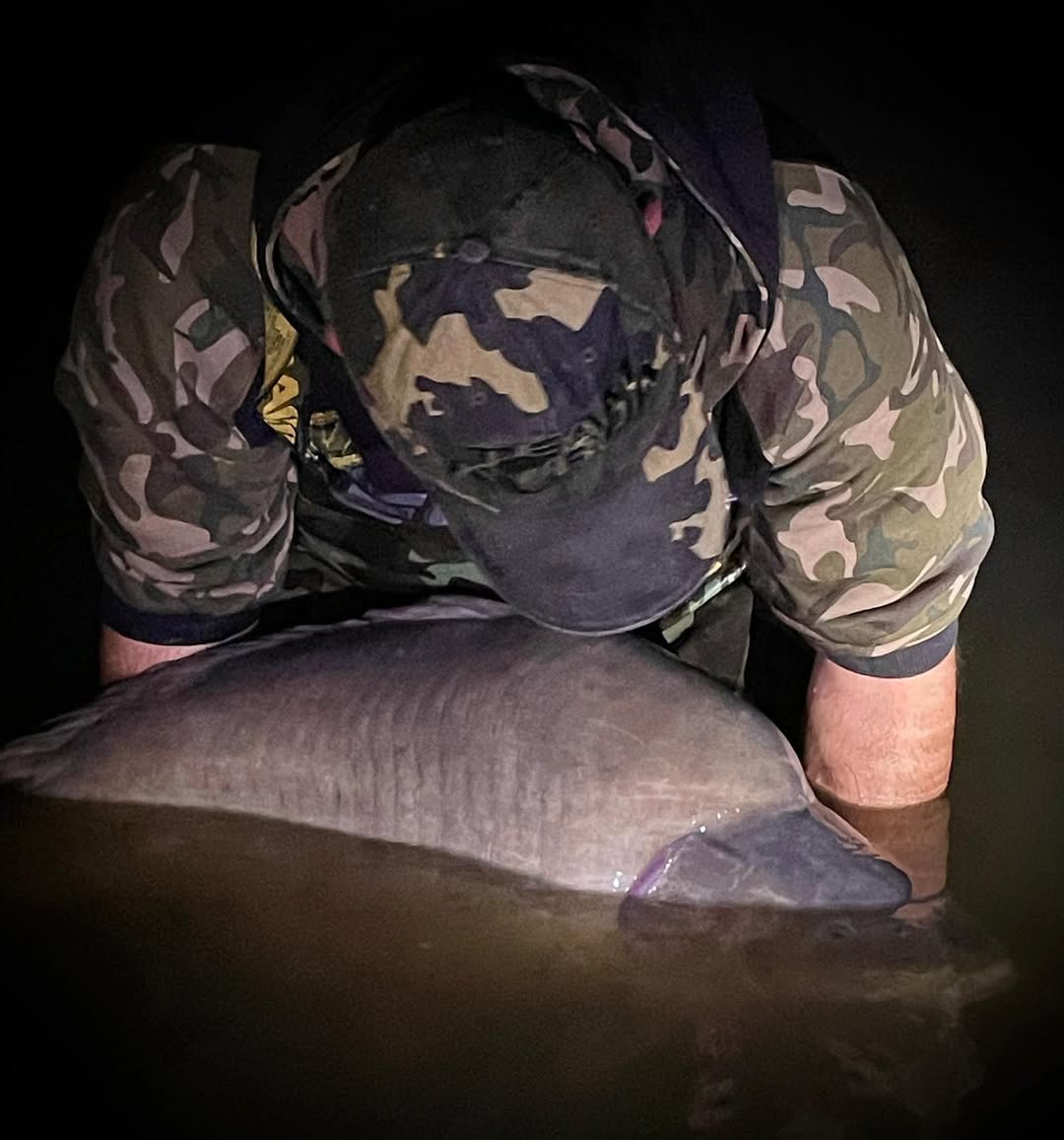



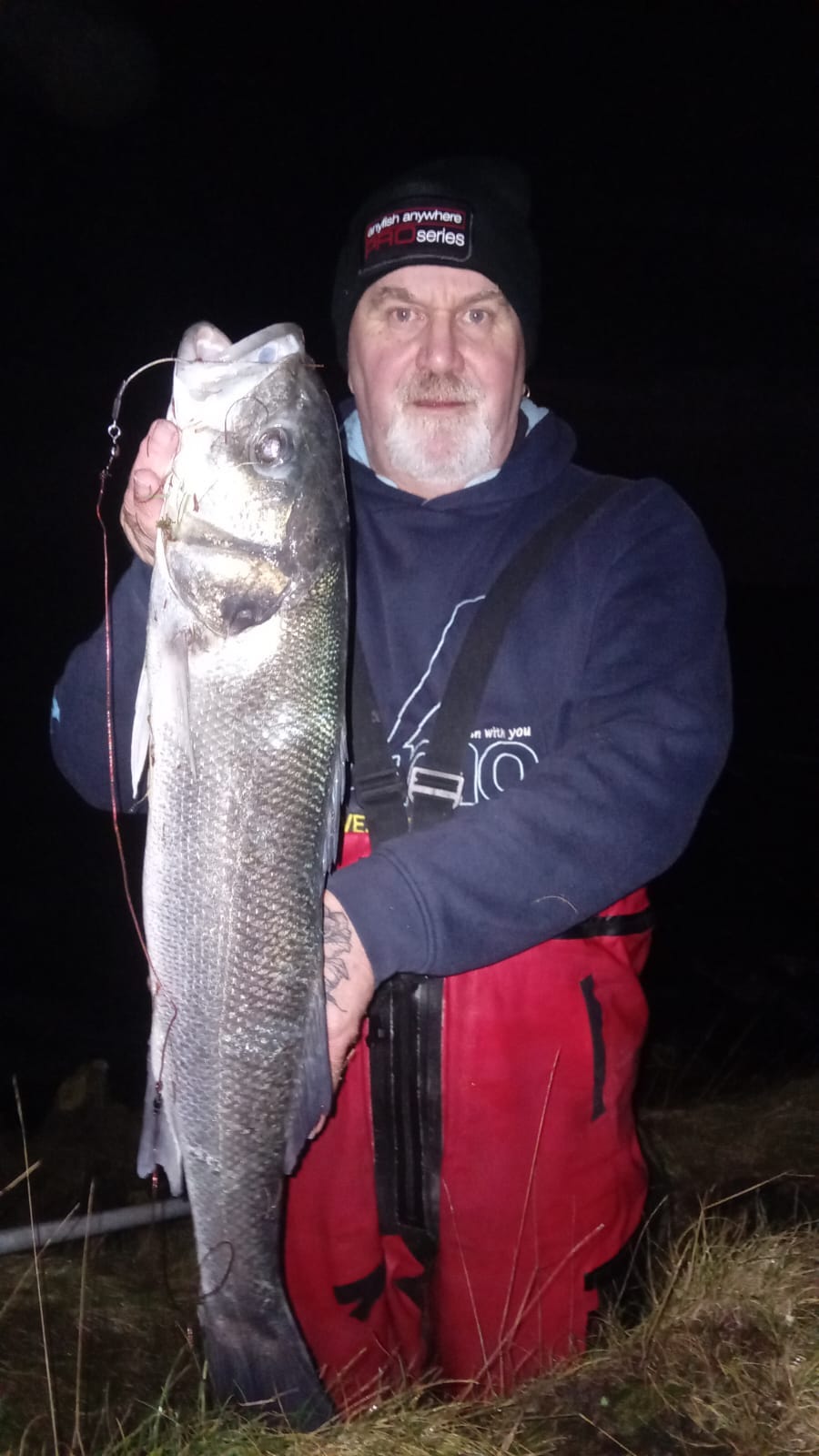
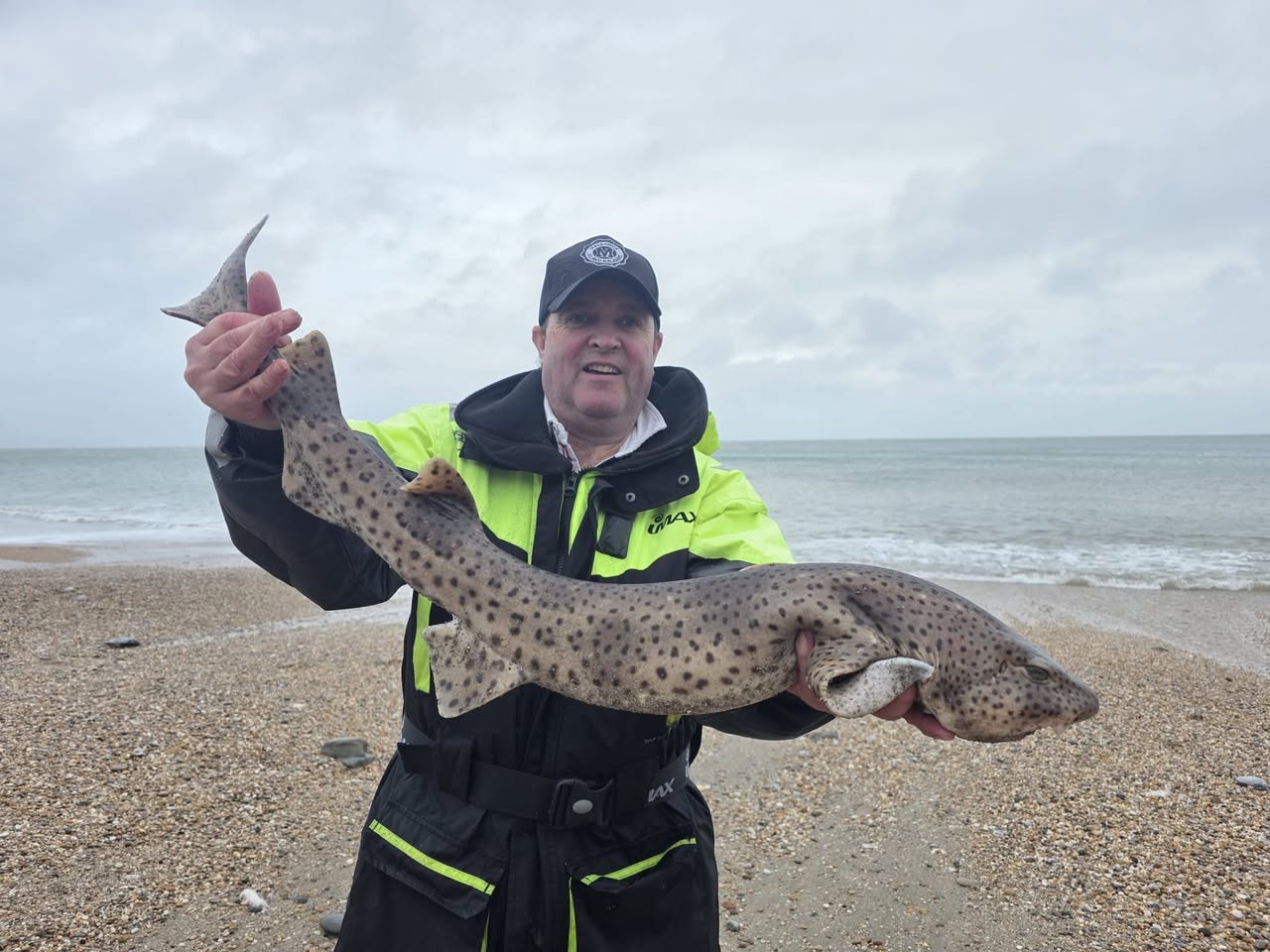
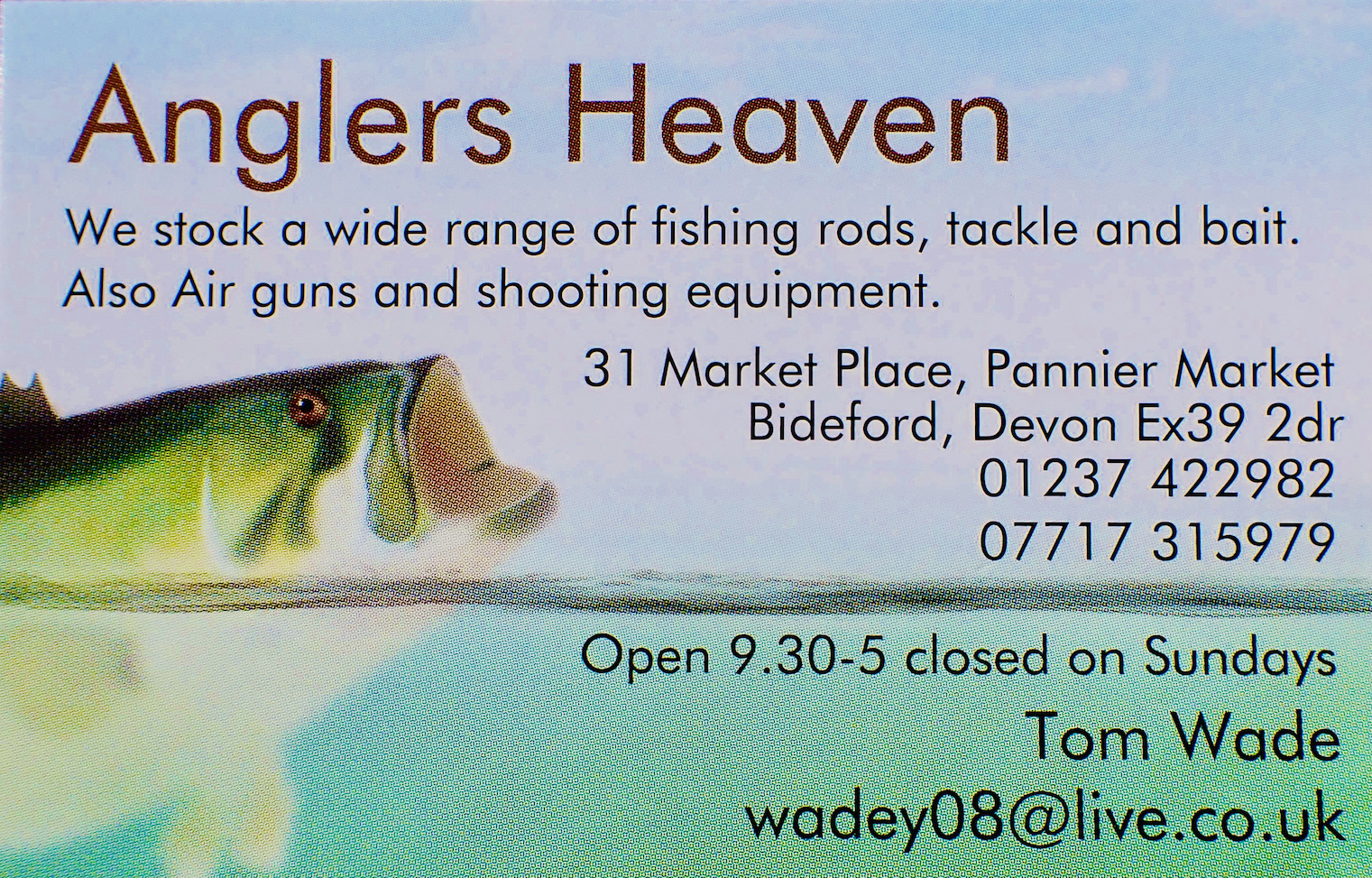
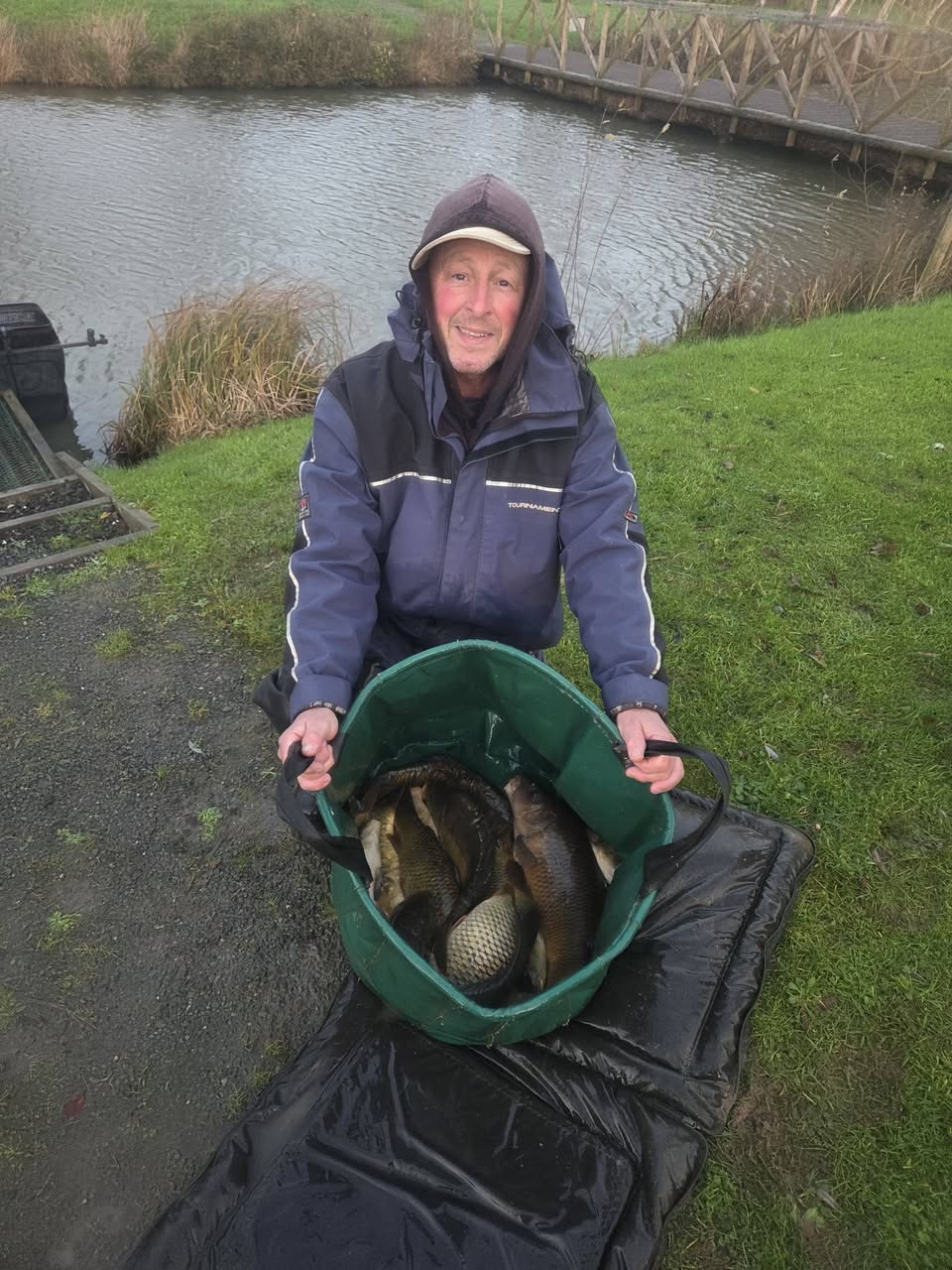
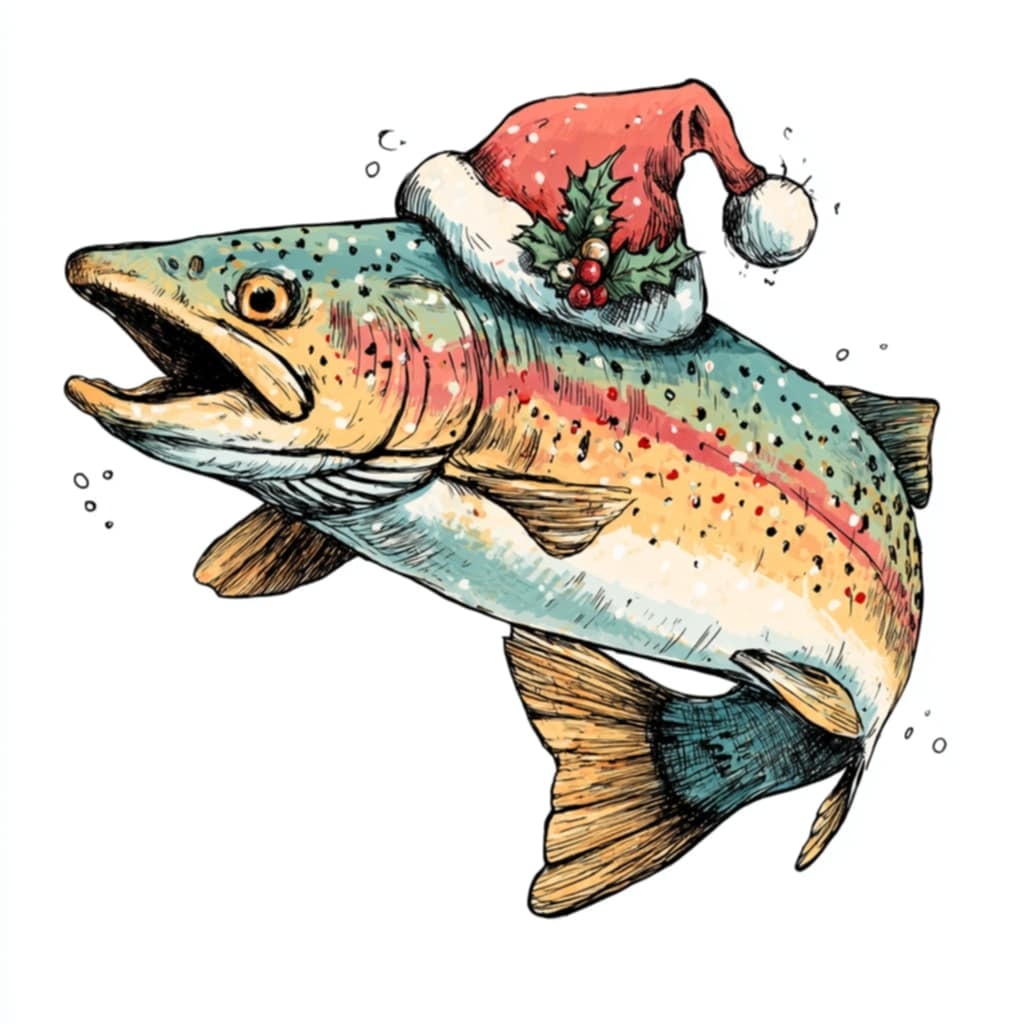
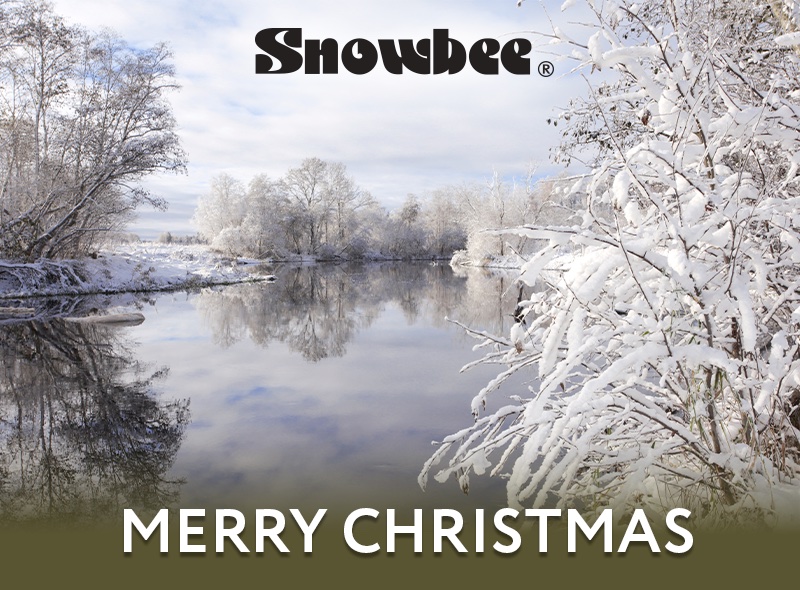

The Torridge Rivers Association
Chairman: Paul Ashworth. Secretary: Charles Inniss.
Beeches Sheepwash Beaworthy Devon EX 21 5NW
e-mail: [email protected]
tel: 01409231237 (m)07464190944

The Salmon Hatchery: I am pleased to be able to report that the hatchery team have been able to trap the broodstock from the fish pass at Monkokehampton Weir. We have five hens (largest 11lb) and four cock fish. The first hen we trapped three weeks ago (a superb fish of 13lb) had to be returned: she was ripe and ready to be stripped of her eggs but at that time we only had two cocks and the EA are insistent that the eggs must be fertilised by three cocks for factorial mating. Hopefully within the next fortnight all the hens will be ready for stripping and we will have over 25,000 eggs laid out in the shallow egg-holding trays.
One of our members recently gave me a copy of an article in the Daily Telegraph magazine which outlines the amazing work of Bob Kindness on the River Carron in Inverness Scotland. For thirty years he has run a hatchery very similar to ours and each spring releases the young salmon at the swim-up fry stage. He has a cylindrical trap set on a pontoon which each year catches the smolts migrating downstream. I quote: “when I look at a smolt caught in the trap, I can determine whether it is a wild fish or a hatchery fish and from which hatchery batch it came from”. Over the last twenty five years salmon stocks on the River Carron have increased dramatically. The amazing work of Bob Kindness has not only increased the numbers of adult salmon returning to spawn but has shown that artificial rearing and stocking retains the genetic quality of the Carron salmon. The editor of the Trout and Salmon magazine wrote: “the debate over the stocking of salmon rivers is hotly contested but the work of Bob Kindness proves that when done correctly artificial stocking can lead to successful and sustainable outcomes and could form a blueprint for artificial stocking as a viable tool for helping other rivers were salmon stocks are in decline”.
Graham Dunn, one of the hatchery team, has completed some essential health and safety improvements. The bridge over the mill leat at the entrance has been strengthened with new handrails and a safety rail has been erected by the leat next to the egg trays.
The Fishing Season: yet another season dominated by hot dry weather and low river levels. The salmon season got off to a wonderful start with a 13lb fish caught at Madeira in the first week of the season: but sadly only a handful of springers were caught in March and April and the salmon anglers had to wait until the last fortnight of the season when after a welcome rise in river levels several salmon were caught mostly from the middle river beats. Rod catches for the season totalled somewhere between 15 and 20: very similar to recent years. The sea trout run was again disappointing, but a spate in June encouraged a run of fish and several were caught again mostly from the middle river beats. As in recent years the saving grace has been the excellent brown trout fishing with several fish over 2lb being caught.
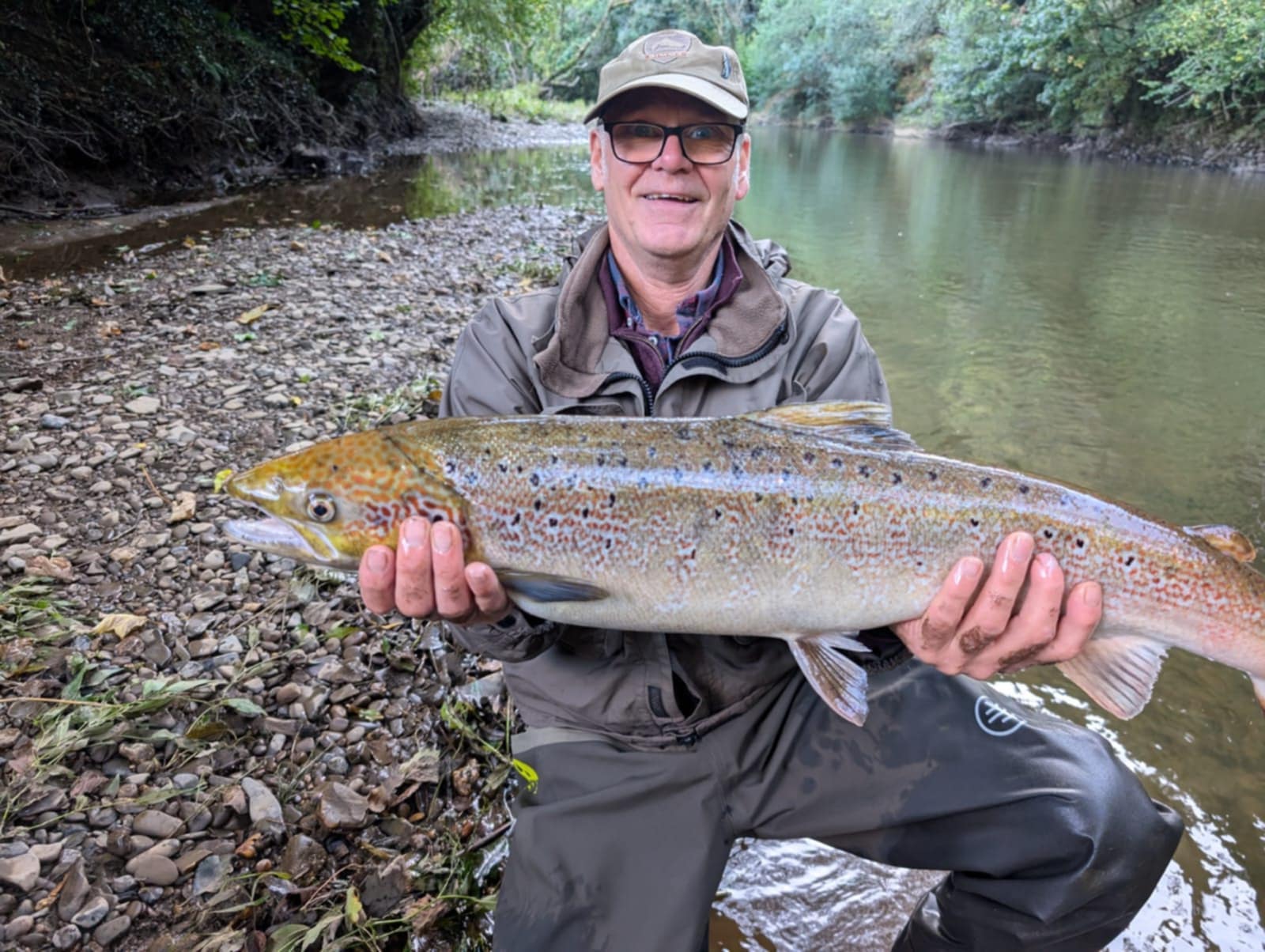
The Annual Egg Box Dinner and Raffle: over 40 members and their guests enjoyed another wonderful evening at The Half Moon with good company and an excellent meal. Sam Fenner, our fishery protection officer, joined us for the evening. The raffle was done online this year to save the cost of printing tickets and postage. It worked very well and raised over £900 to help with the costs of running the hatchery. Thank you for your support. Prize winners: 1st: Chris Payne: £100 Sportfish voucher. 2nd Graham Henderson: case of wine voucher. 3rd Ron Burton: £50 Half Moon voucher 4th Adam Barron: a days fishing at Brightlea. 5th Andy Wadham: teacloth painting of Mill Leat.
My best Xmas wishes to you all. Winter well. Charles.

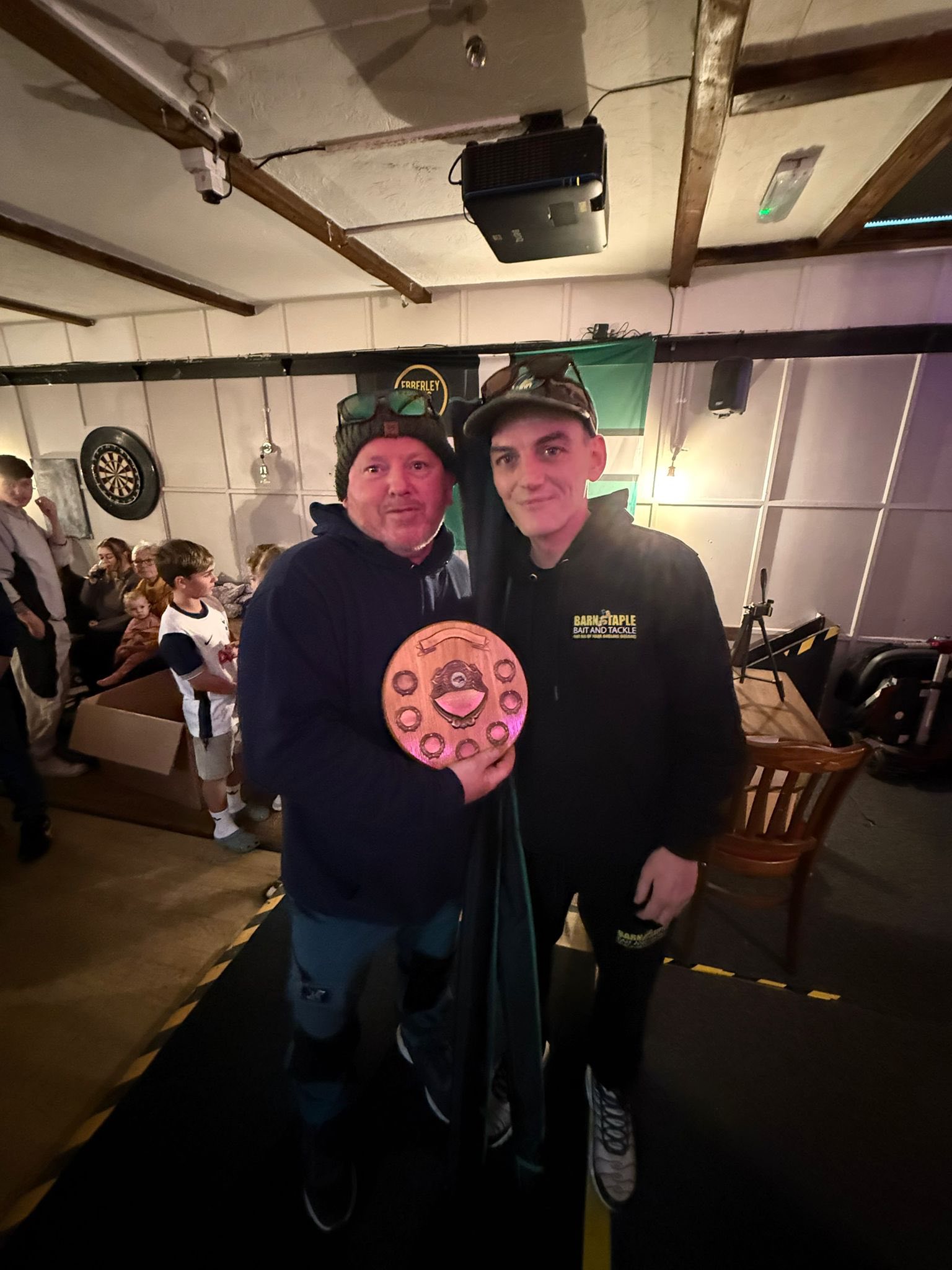
The flounder fishing season is in full swing with last weekend’s BBT Dan Miles Redmore Open attracting over one hundred competitors who raised over £1200 for Children’s Hospice South West. The competition was won by Mario Manley with a fine flounder of 1lb 15oz. David Atkinson was runner up with a flounder of 1lb 14oz and David Jenkins third with a flounder of 1lb 10.5oz. The best brace was caught by David Atkinson with two for 3lb. olive Atkinson was top junior with a flounder of 1lb 5oz with AJ Woodger runner up with a flounder of 1lb 4.5oz.
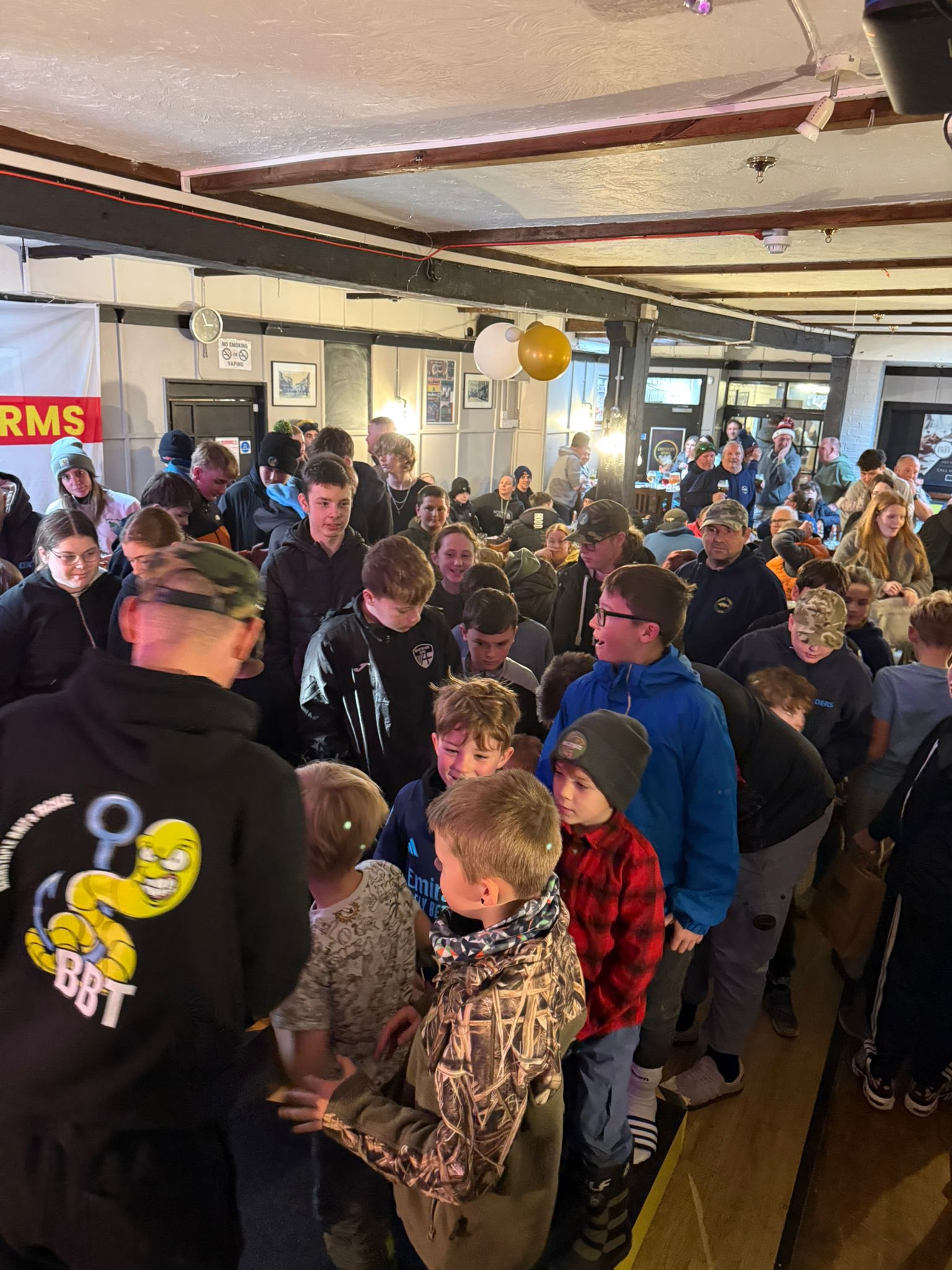
Bulldog Fisheries November Trout Fishing Competition was won by Ian Conabear with six rainbow trout for a total bag weight of 15lb. Aiden Revie was runner up with six for 14lb 15oz and Nick Tamlin fourth with six for 14lb. The biggest fish of the day was a fine tiger trout of 6lb 14oz to Aiden Revie.
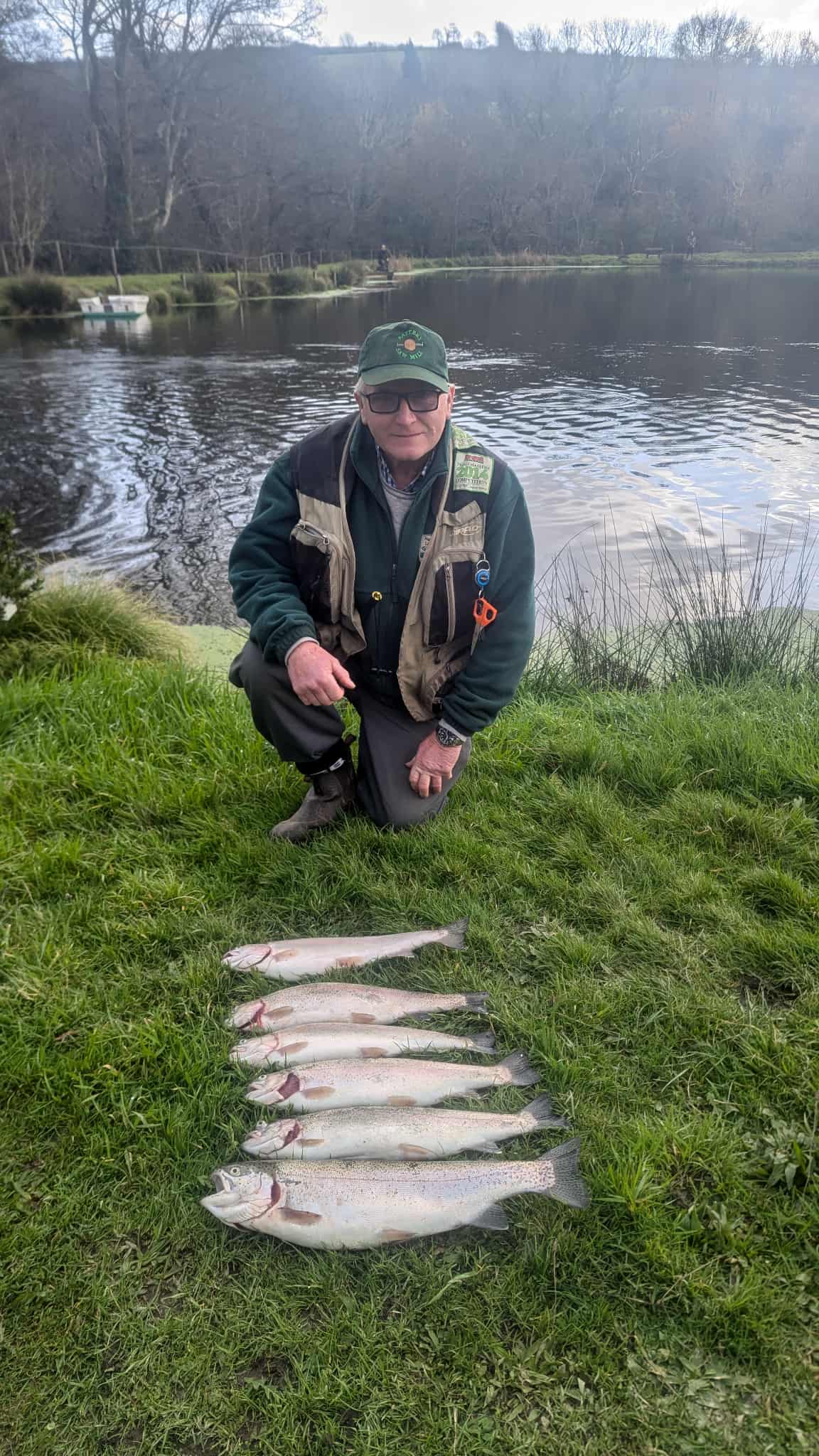
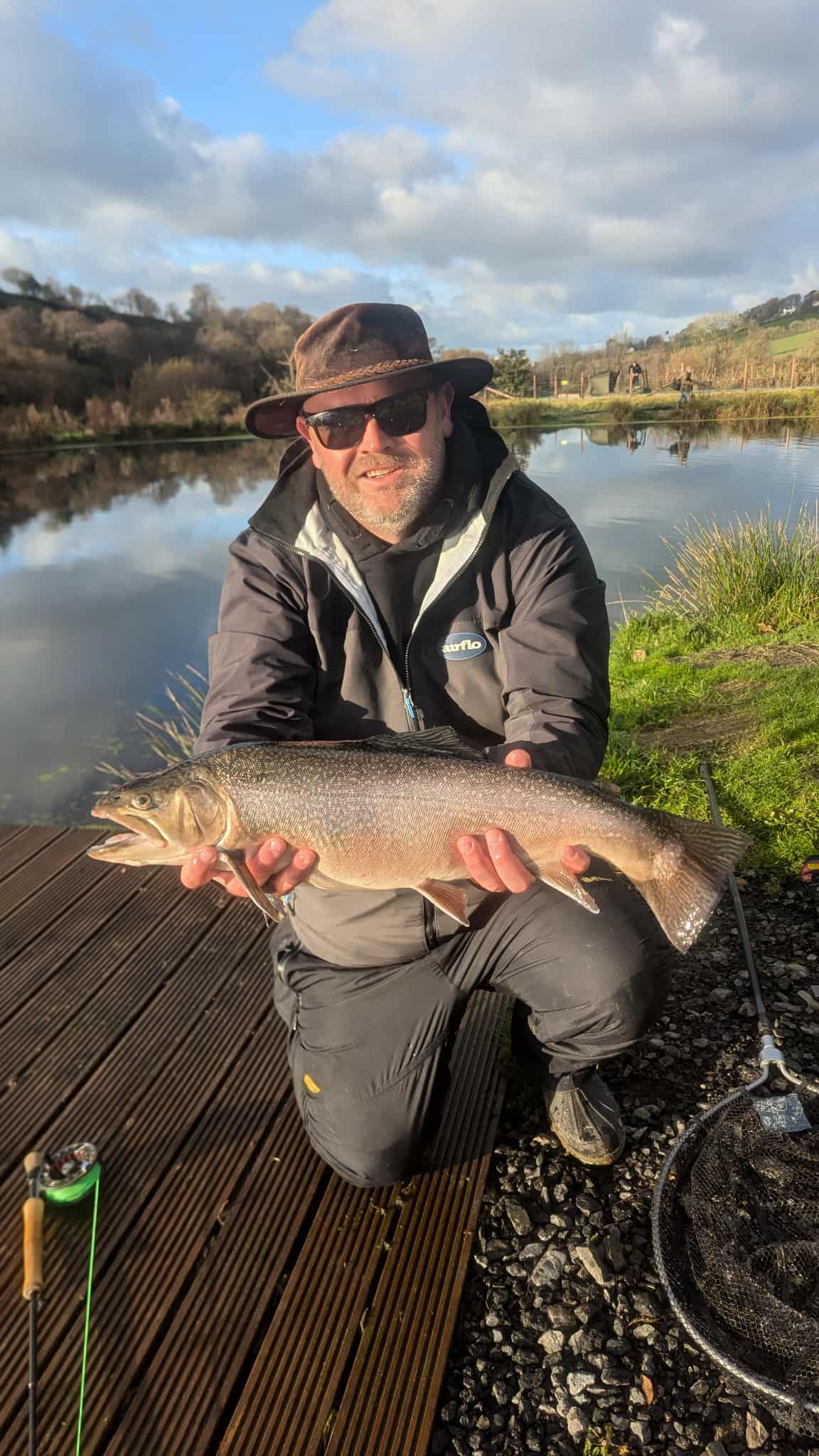
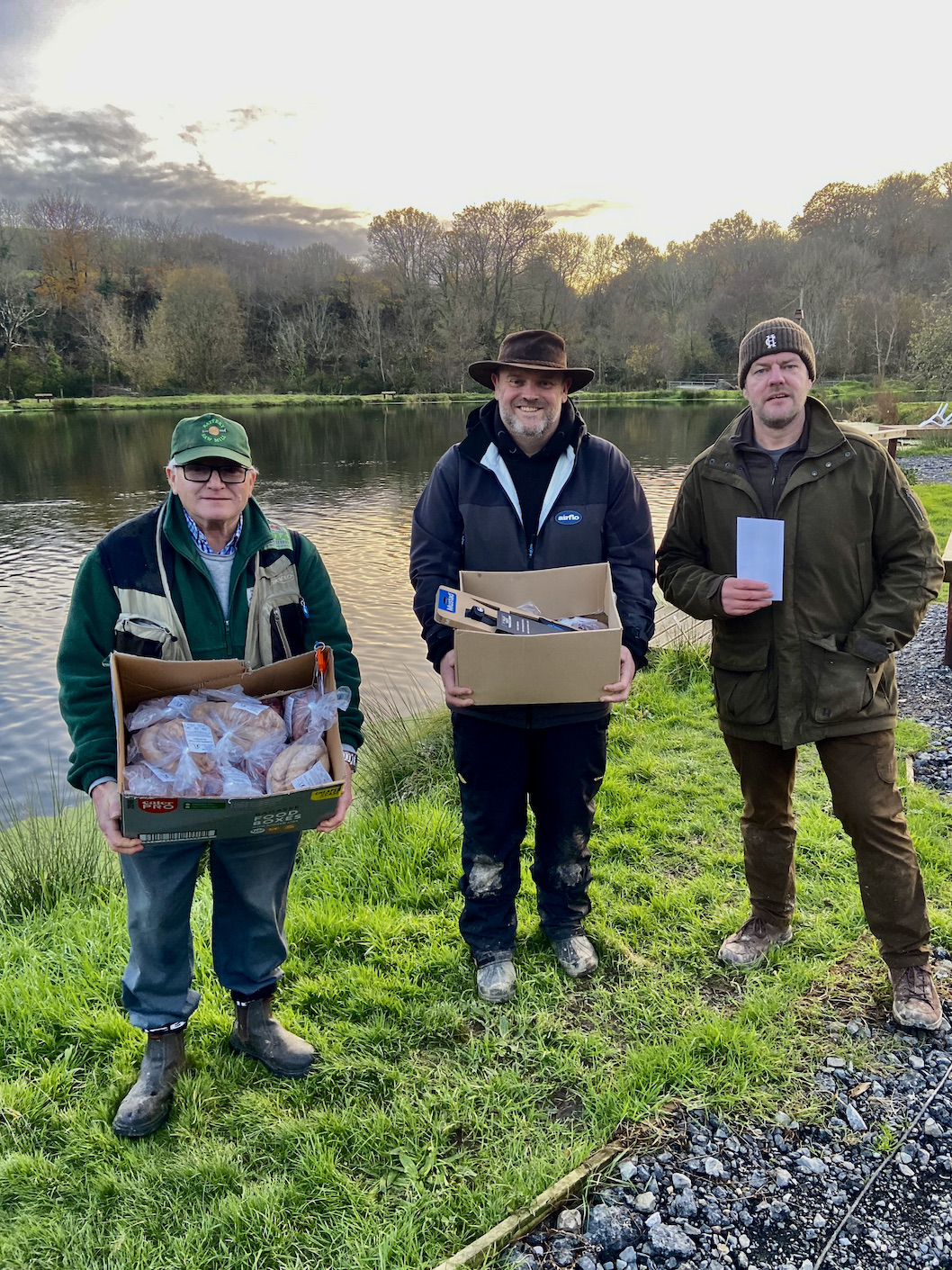
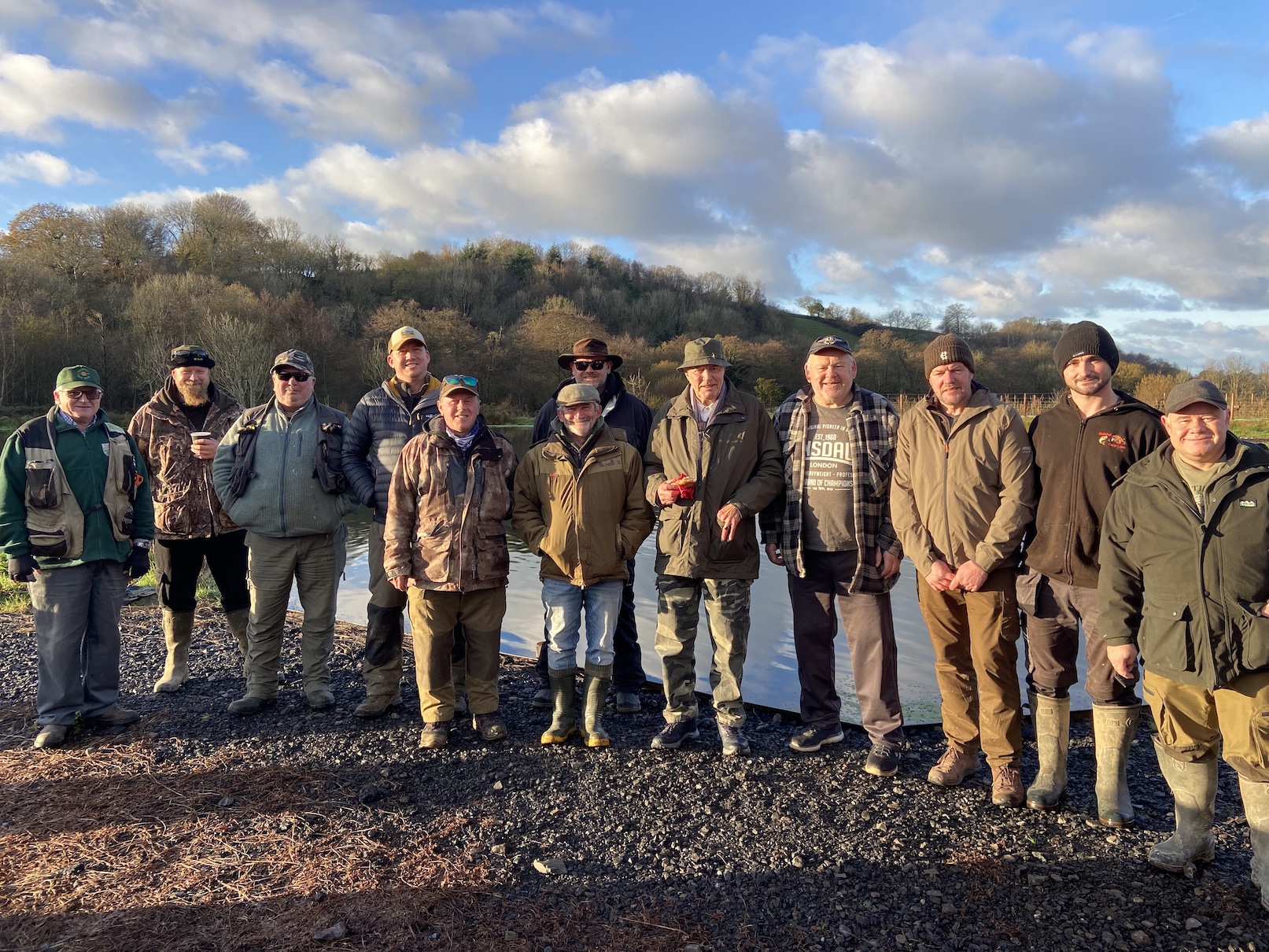
Bulldogs monthly trout competitions are very much a social occasion with plenty of coffee, biscuits, bacon rolls to start the day with burgers and chips for midday lunch. The events are limited to twelve anglers and generally sell out quickly. Novembers competition was blessed with sunshine and light winds which may not have been ideal for the trout but were certainly perfect for the competitors.

Bideford Angling Clubs latest Rod and Reel Match on their home water Tarka swims was won by Colin O Hagan with 39lb 2oz. Runner up was Ian Sedgewick with 24lb 9oz and third Keith Copland with 23lb 15oz.
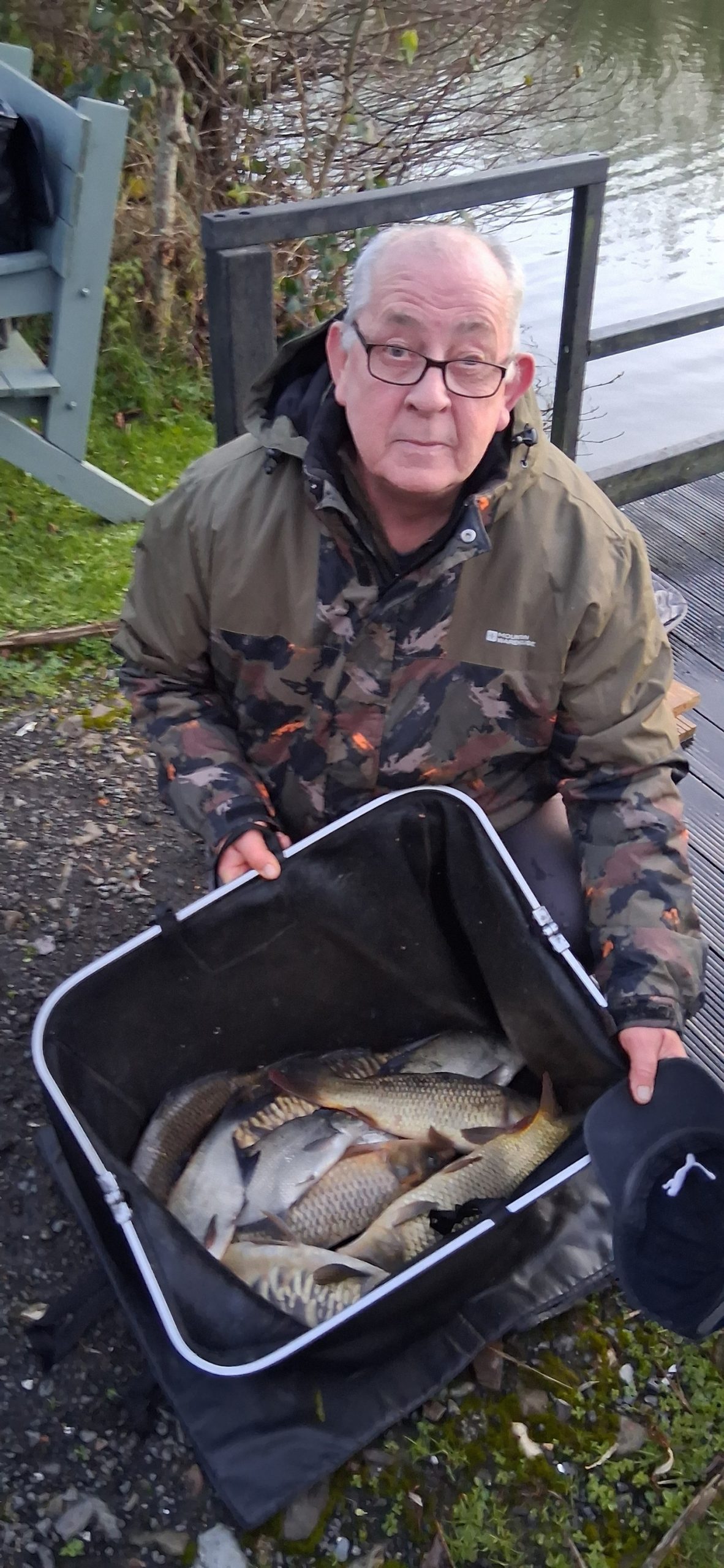
Anglers Paradises Lure Fishing weekend was hotly contested with a wide range of species tempted from the complex. Sixteen year old Harrison Woodham was the weekends champion landing seven different species including pike, rudd, common carp, mirror carp, perch, brown trout and rainbow trout. Runner up was Scott Way with five species. The biggest pike of the weekend was caught by Nikki Williams and measured 89cm. The biggest perch of 35cm was caught by Matthew Colegate. Nat Worsfold banked the biggest catfish at 78cm. Thomas Wilson caught the first chub to be tempted during the lure fishing competition. Fox Rage were the winning team with nine species. The event was generously sponsored by Capital Angling, Rapala, Fortis Eyewear, Fox Rage, Okuma Europe, Devon Baits and Okuma Freshwater UK.






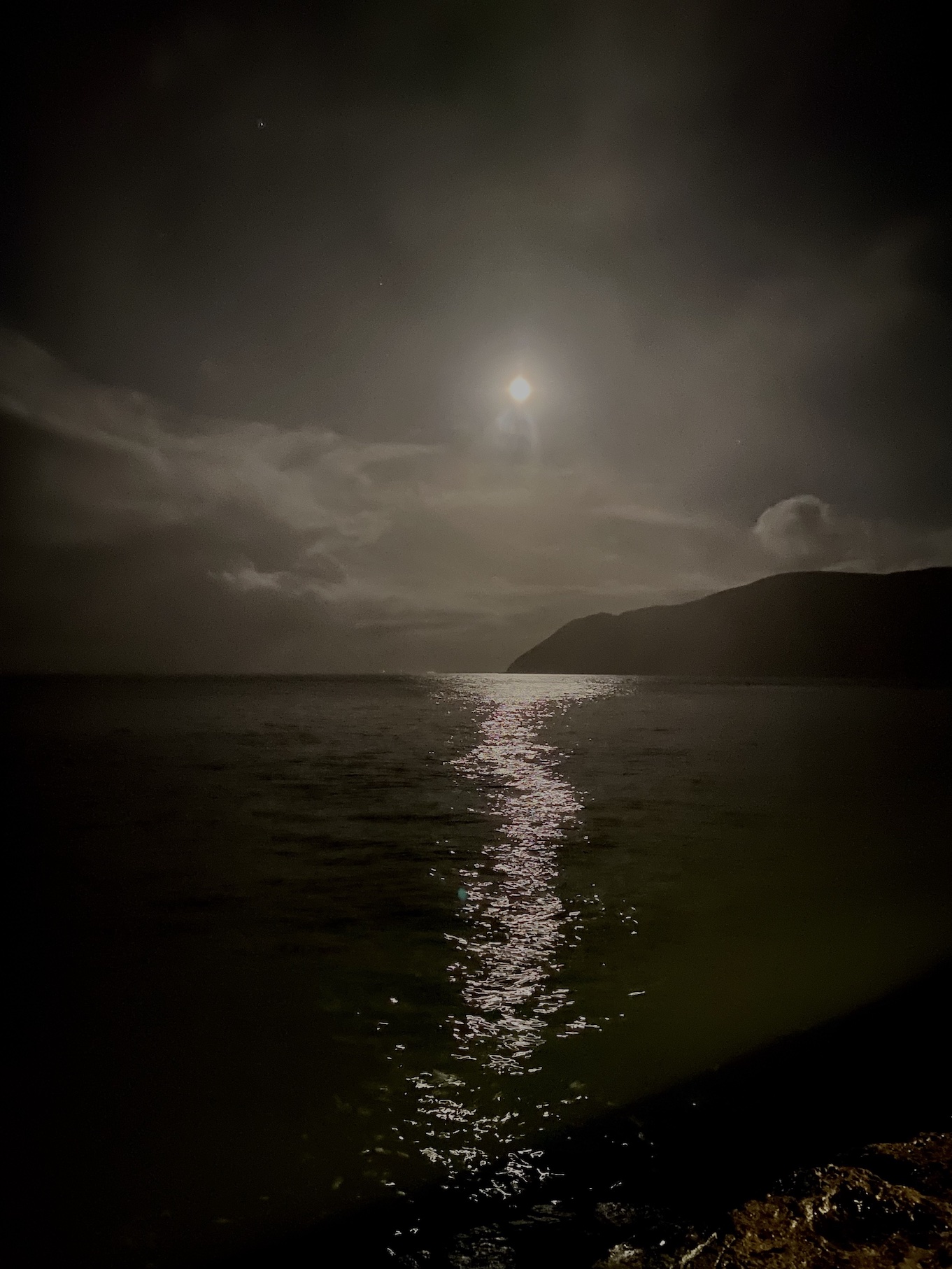
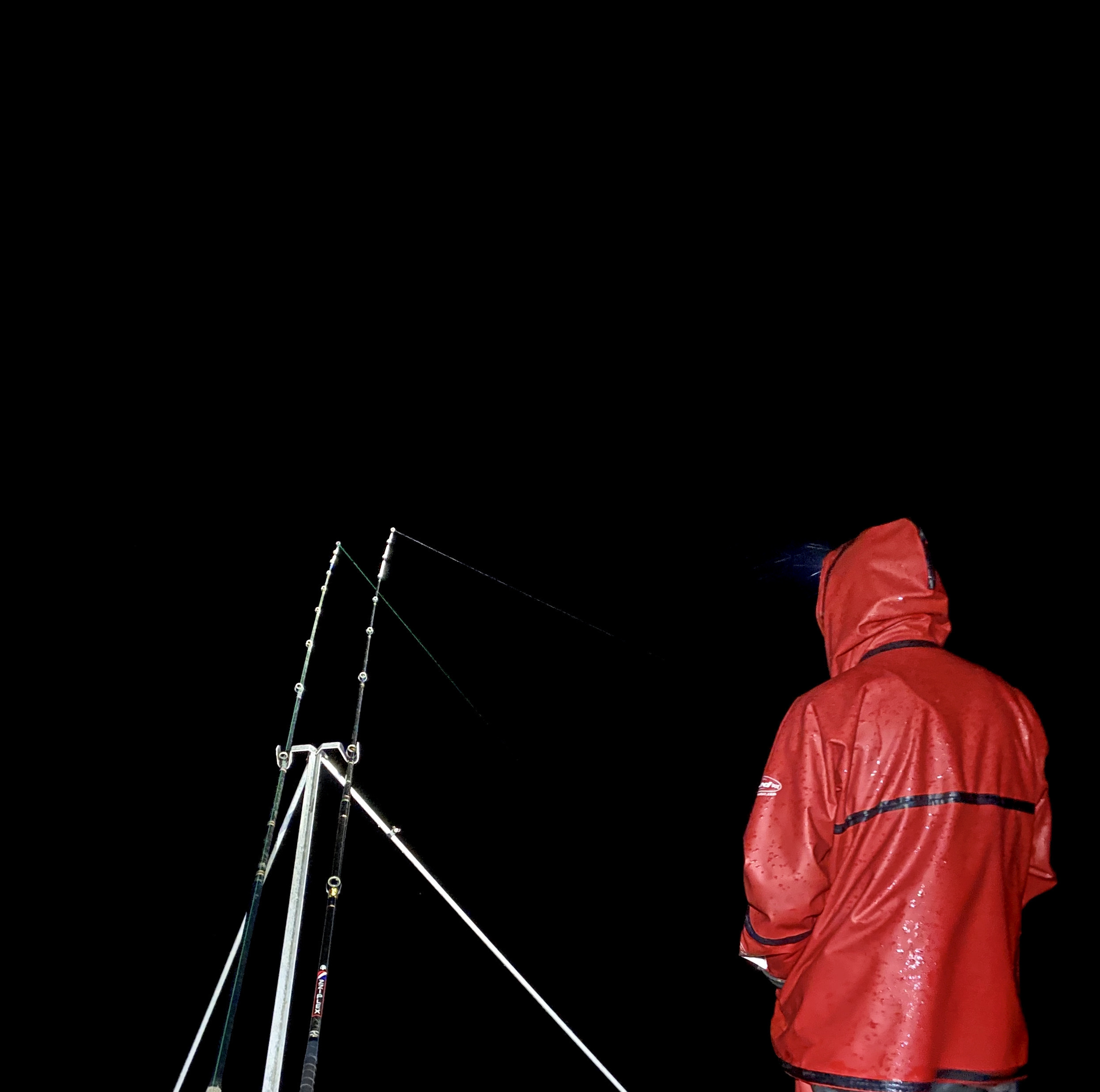

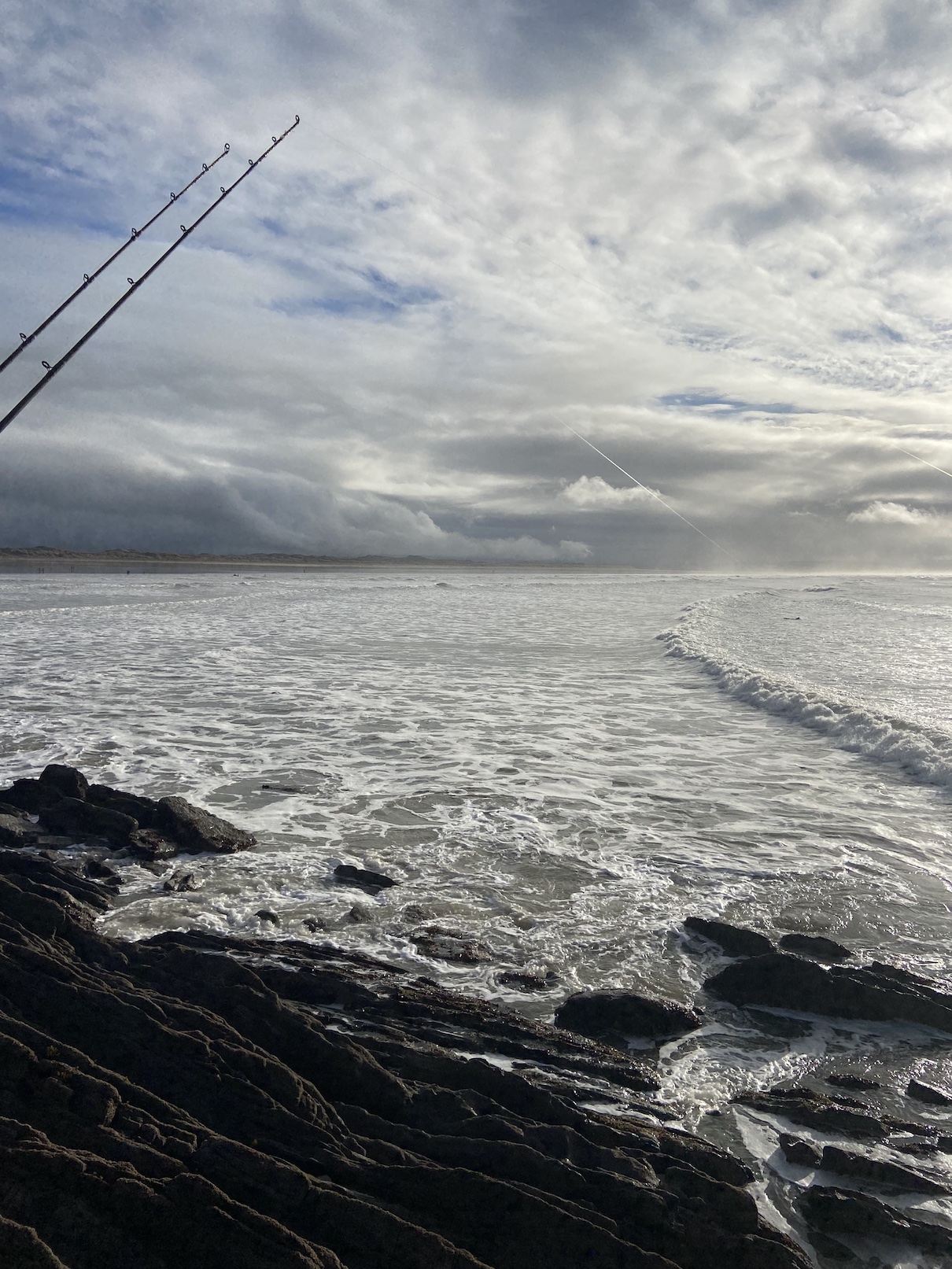



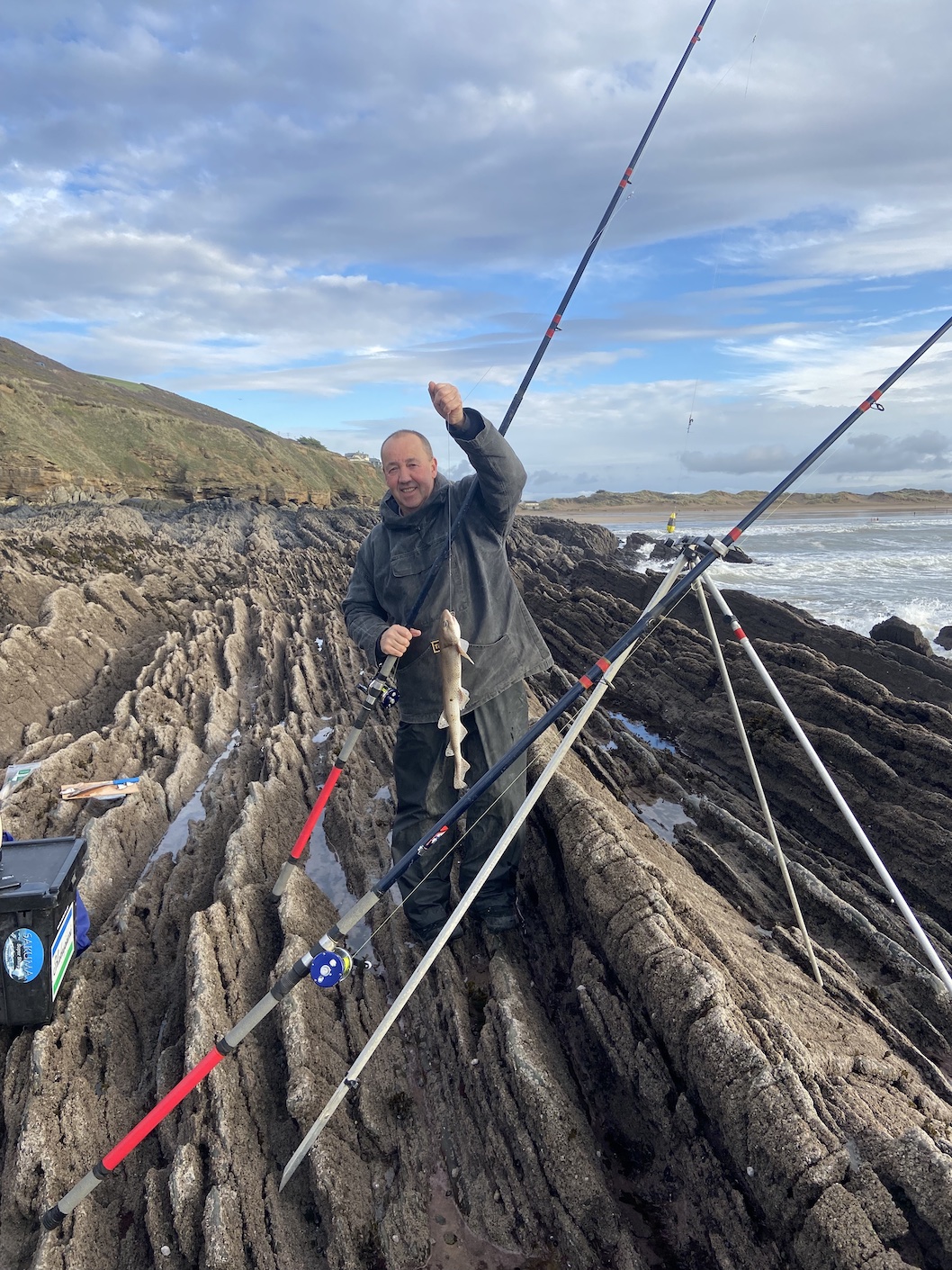







Bulldogs monthly trout competitions are very much a social occasion with plenty of coffee, biscuits, bacon rolls to start the day and burgers and chips for midday lunch. The events are limited to twelve anglers and generally sell out quickly. Novembers competition was blessed with sunshine and light winds which may not have been ideal for the trout were certainly perfect for the competitors. Heavy rain showers had hit hard the previous day and weather warnings were in place for the following day.


The competition got underway shortly after 9.00am and the trout were obliging for the first hour with most anglers catching a brace or two with lures working well.
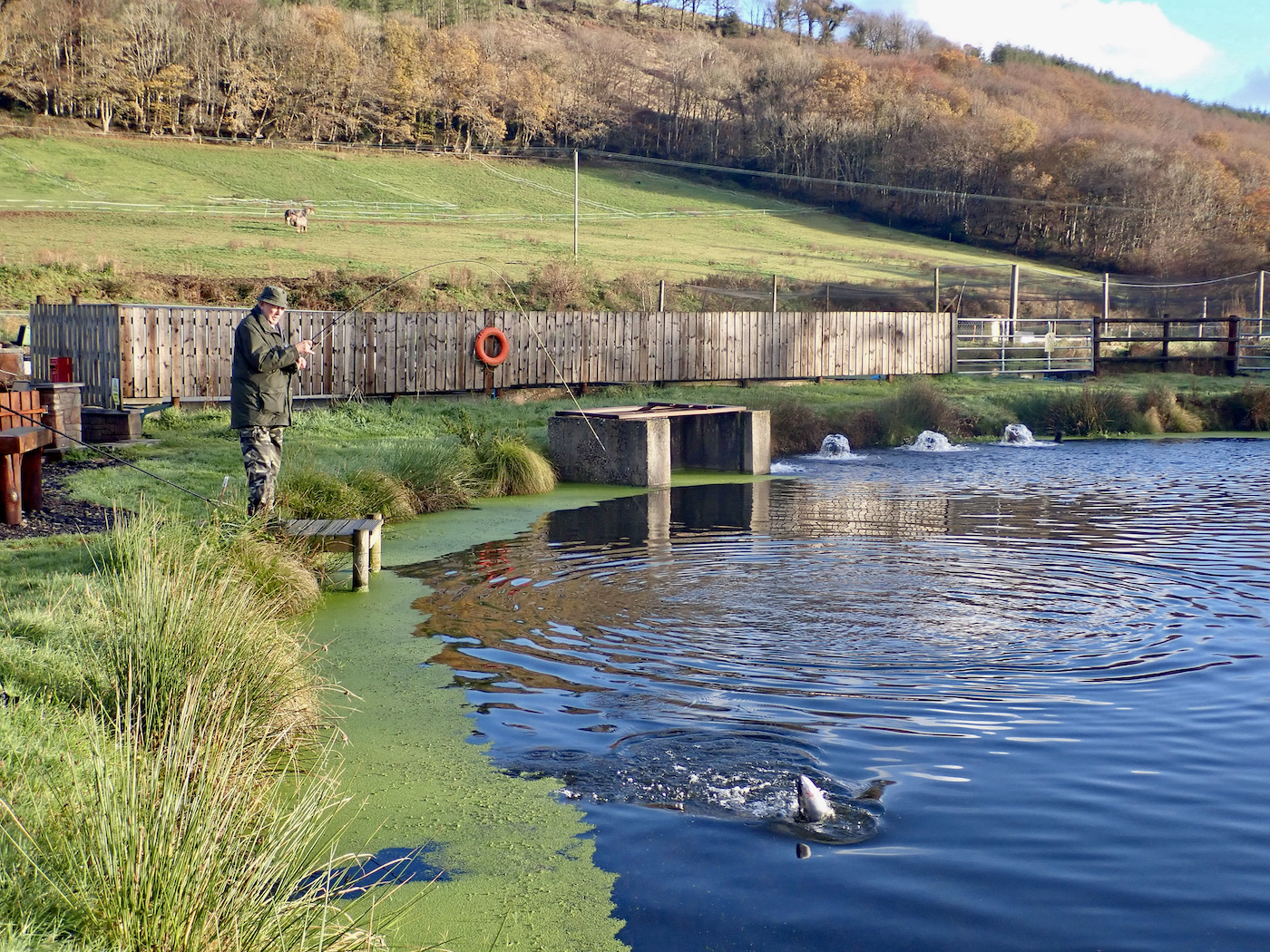
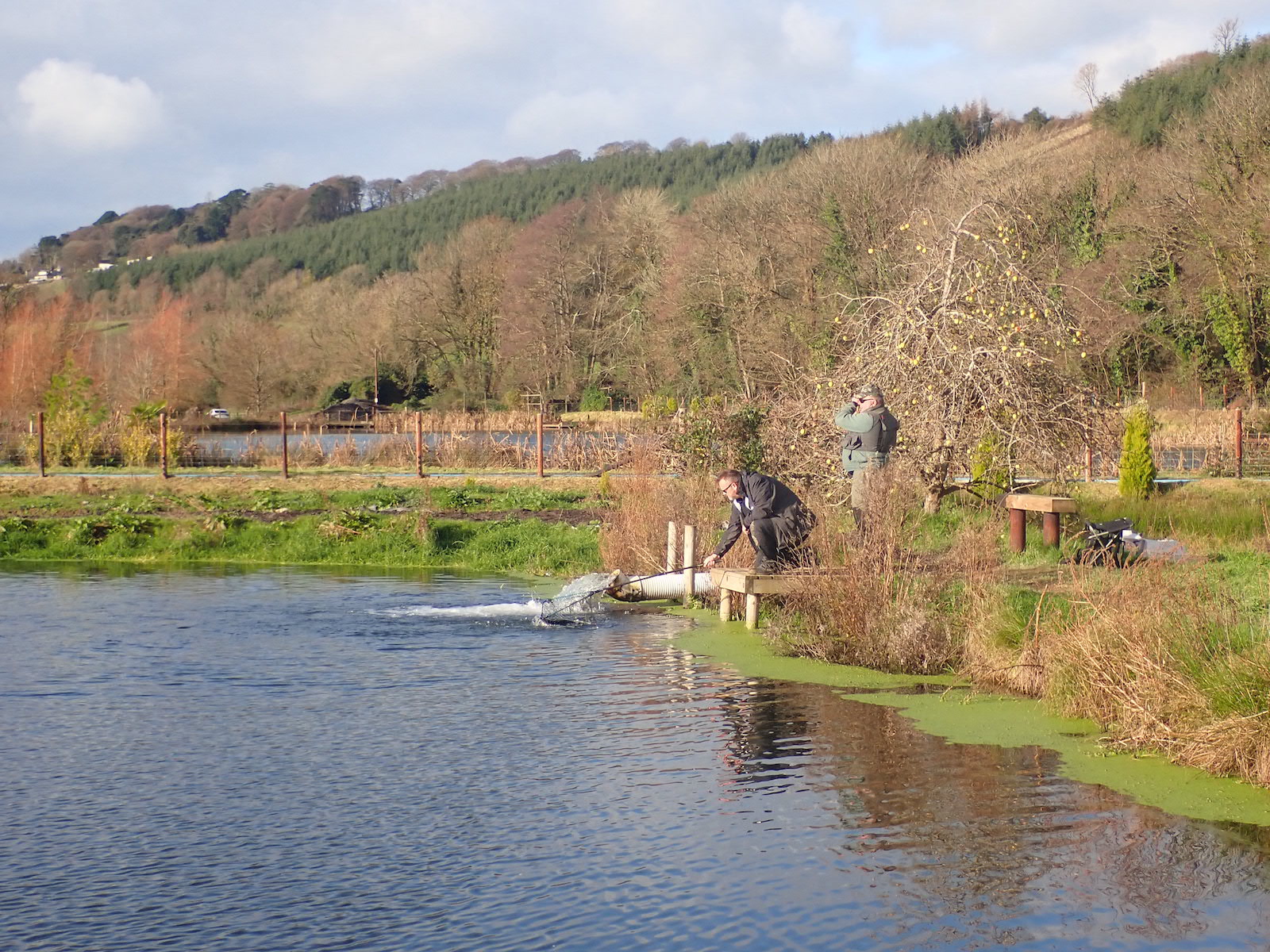
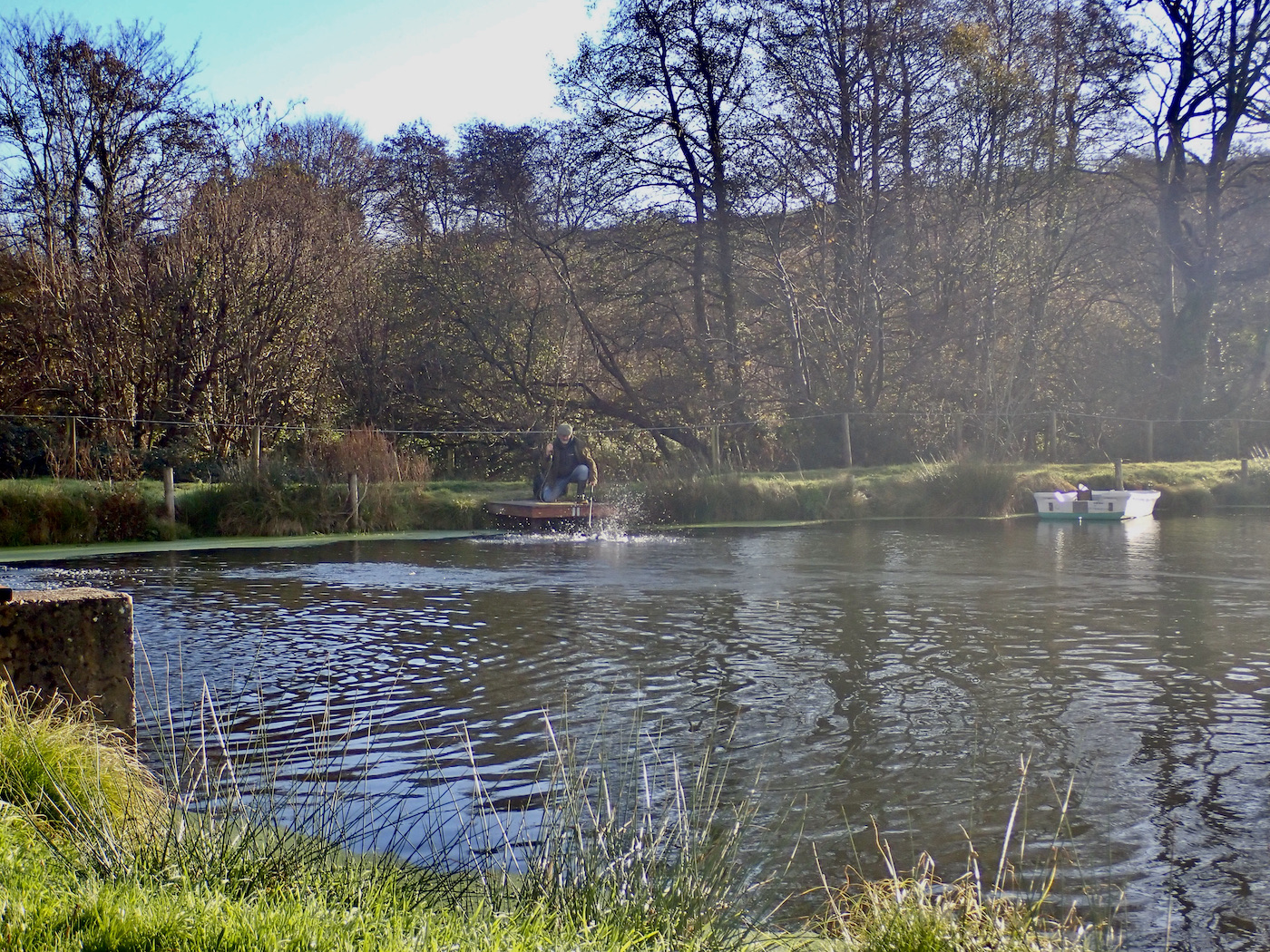

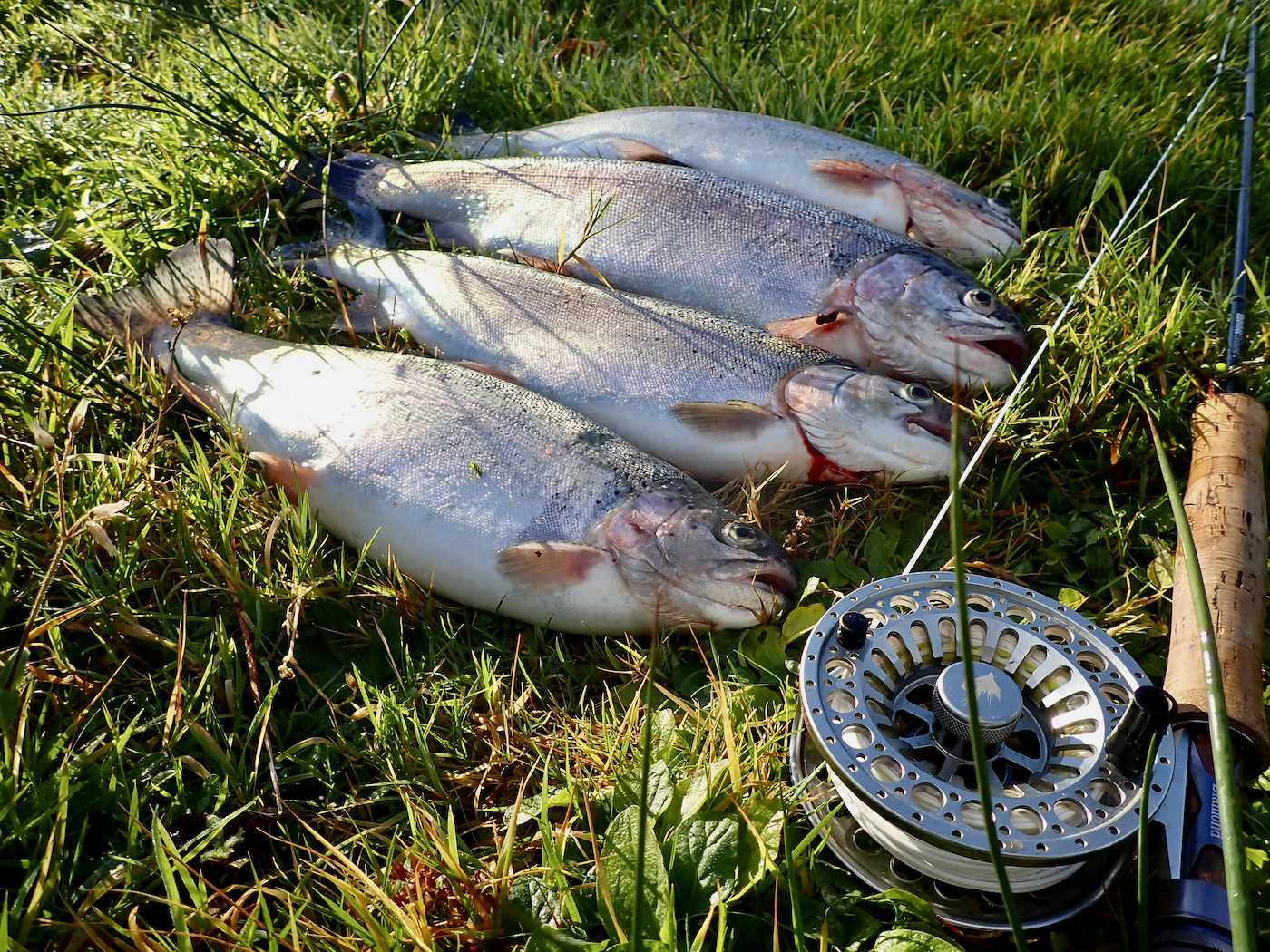
My own morning session resulted in four rainbow trout to 3lb 12oz all tempted on my favourite olive damsel. I enjoyed an hour chatting with fellow anglers and capturing a few images of this last day of Autumn.
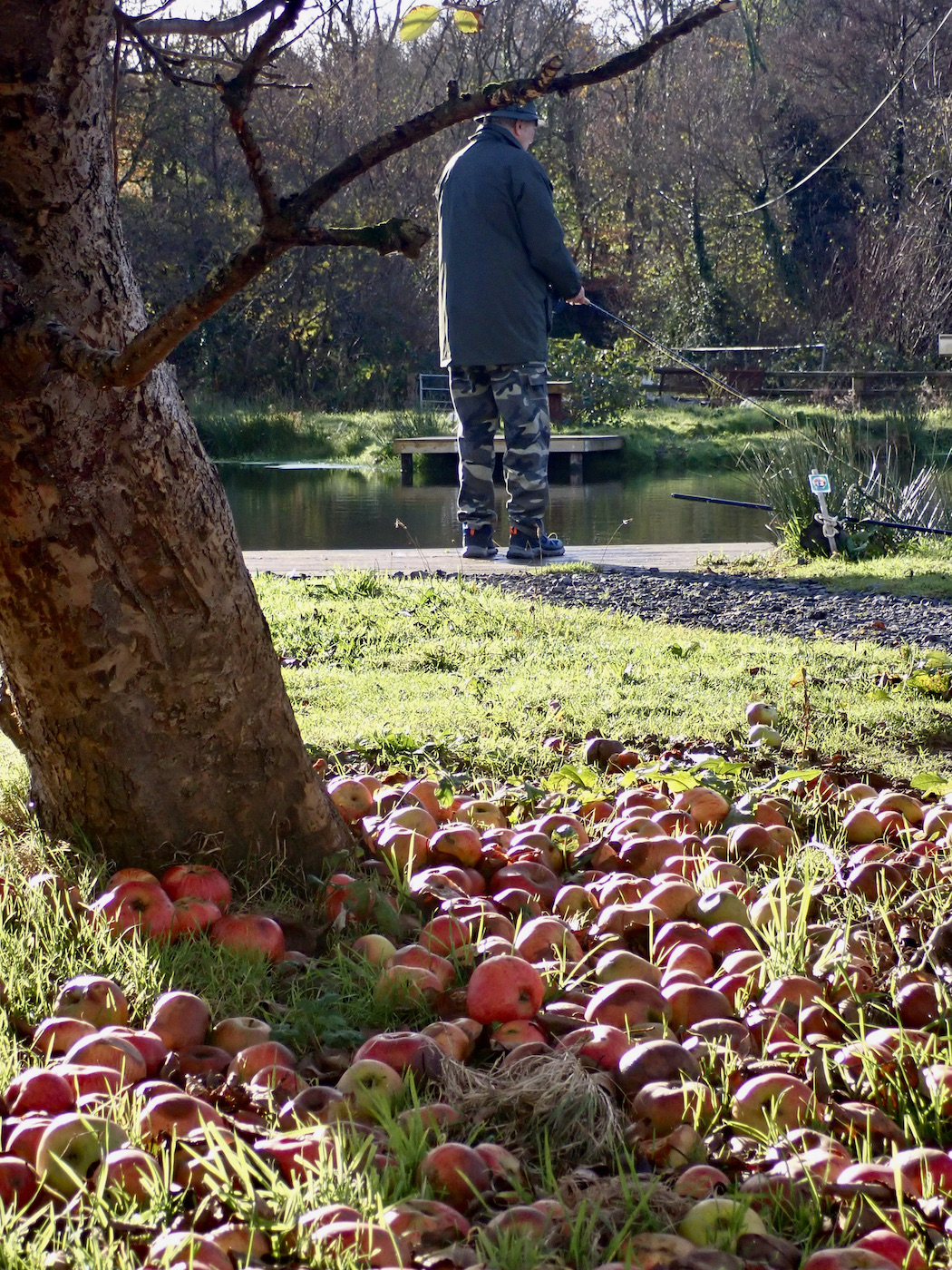
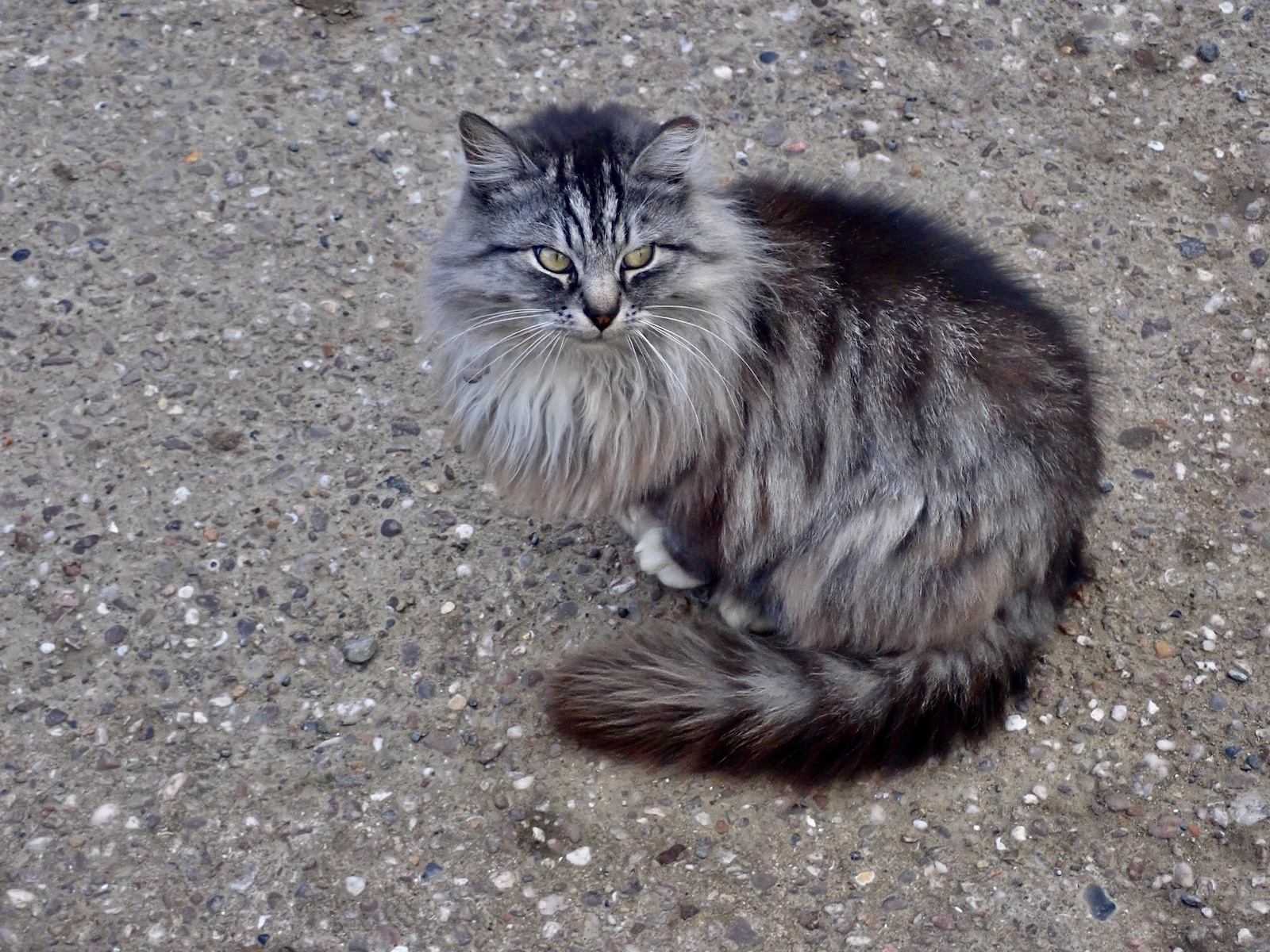
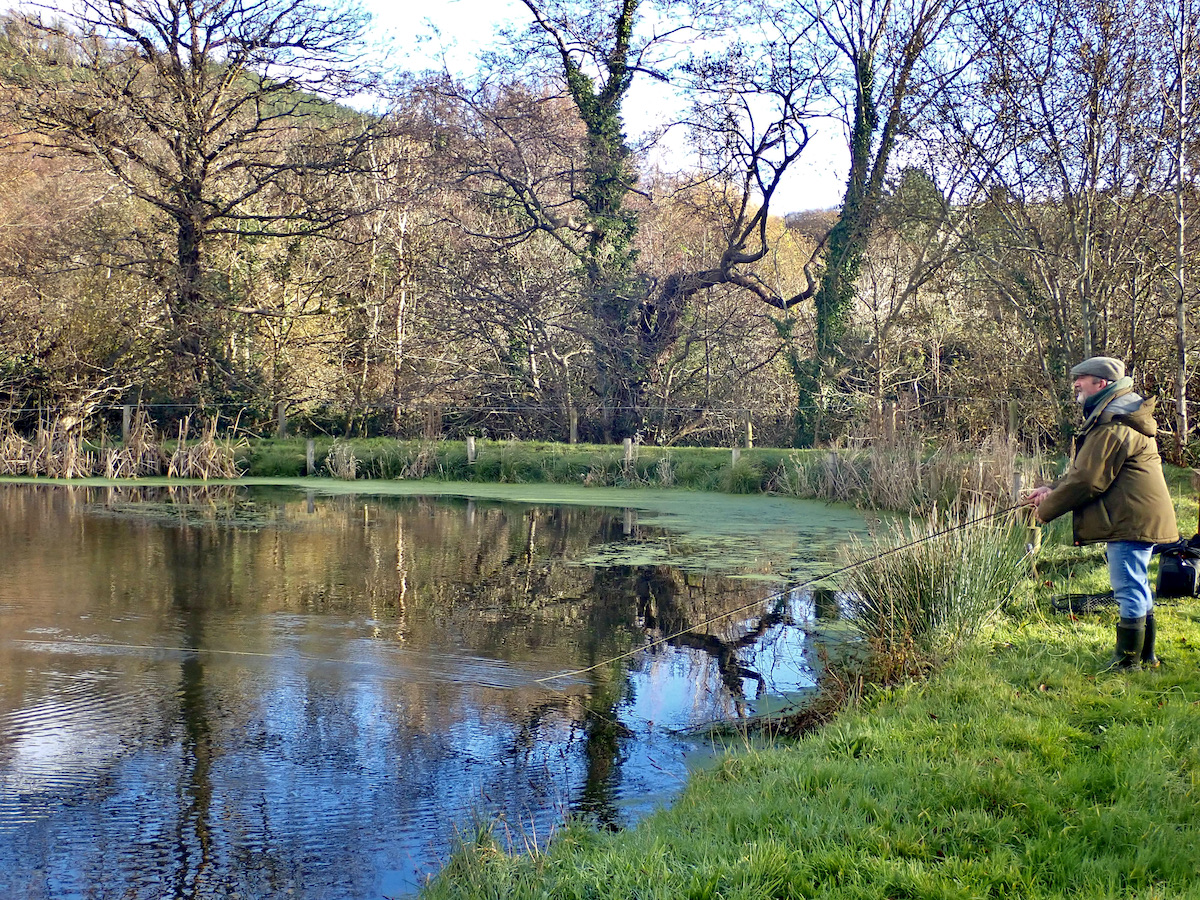
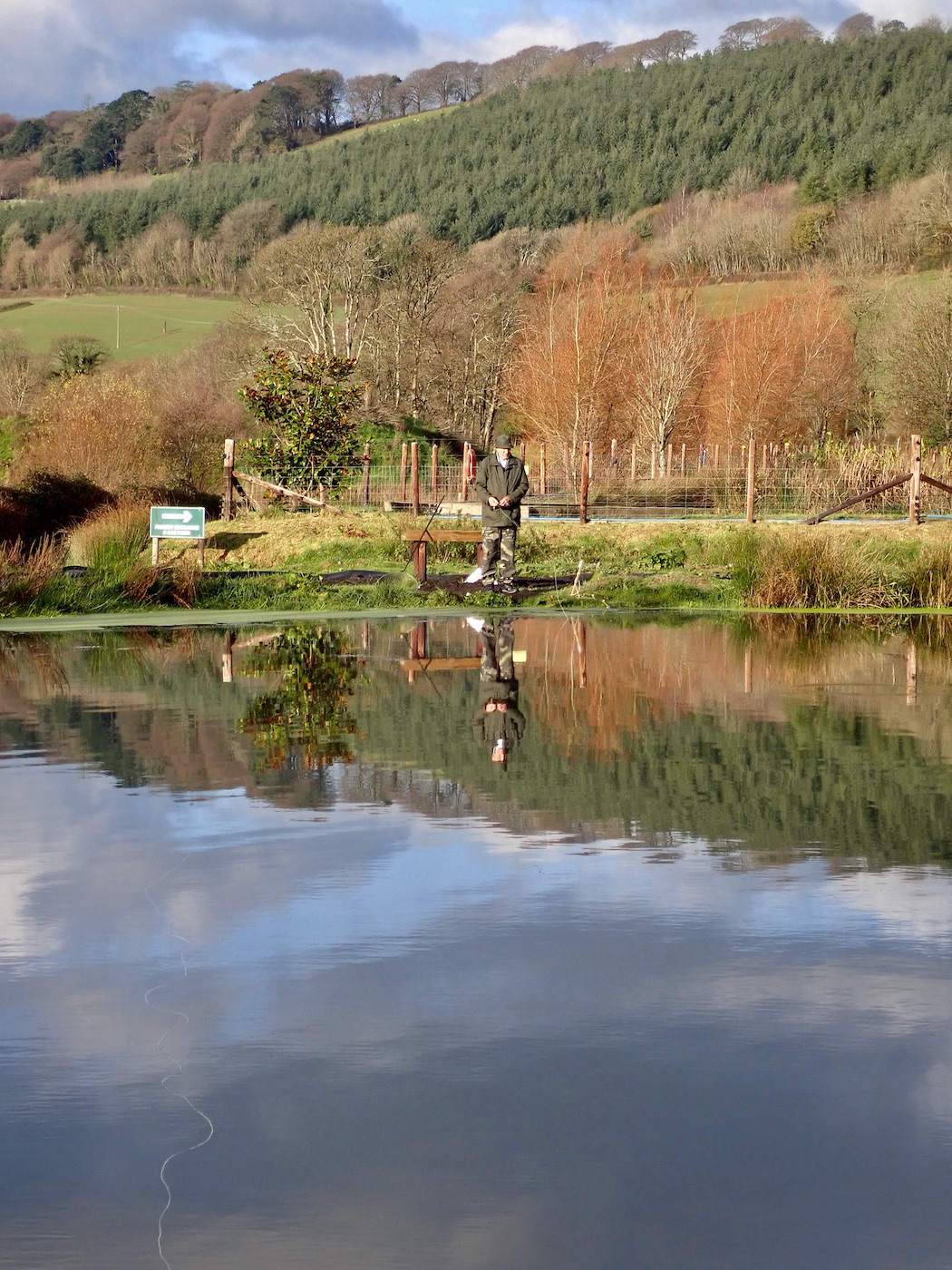
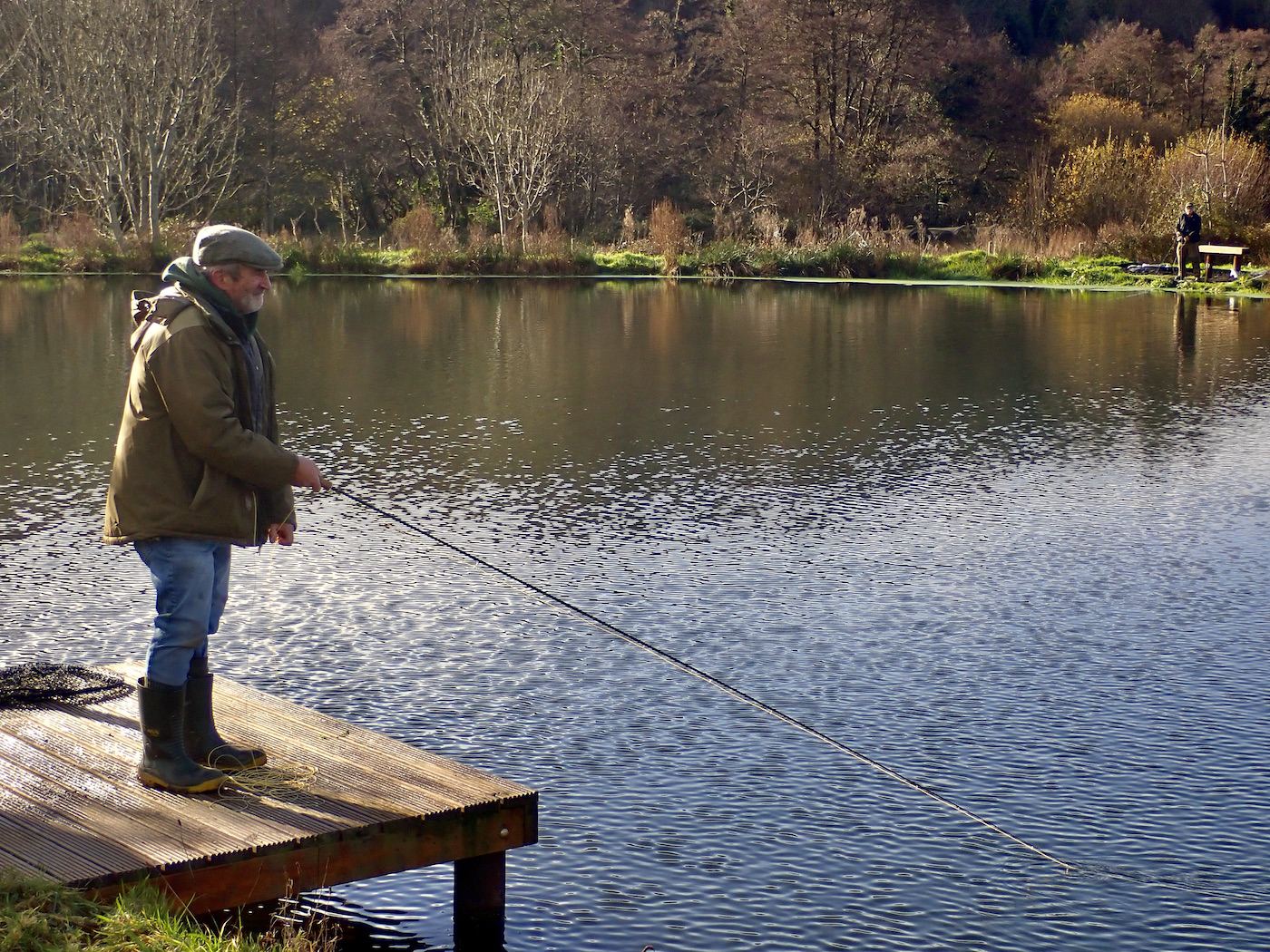
The afternoon session proved hard going with just a few trout tempted a fact that proved frustrating for Tom and Nigel who had recently stocked some very large brown trout, spartics and tigers. These large fish will undoubtedly succumb to anglers over the coming weeks or maybe at the Christmas Competition on December 14th.

